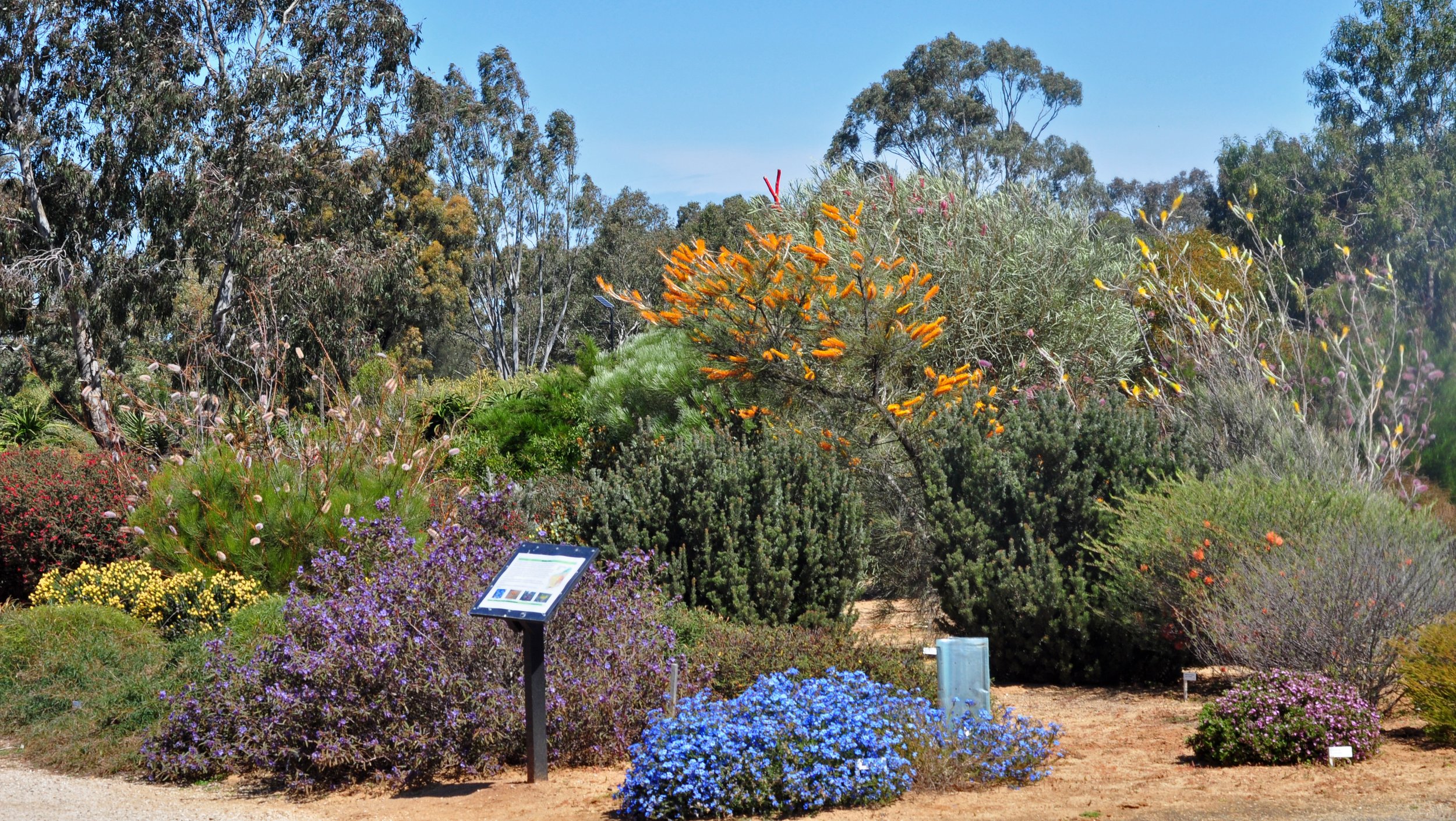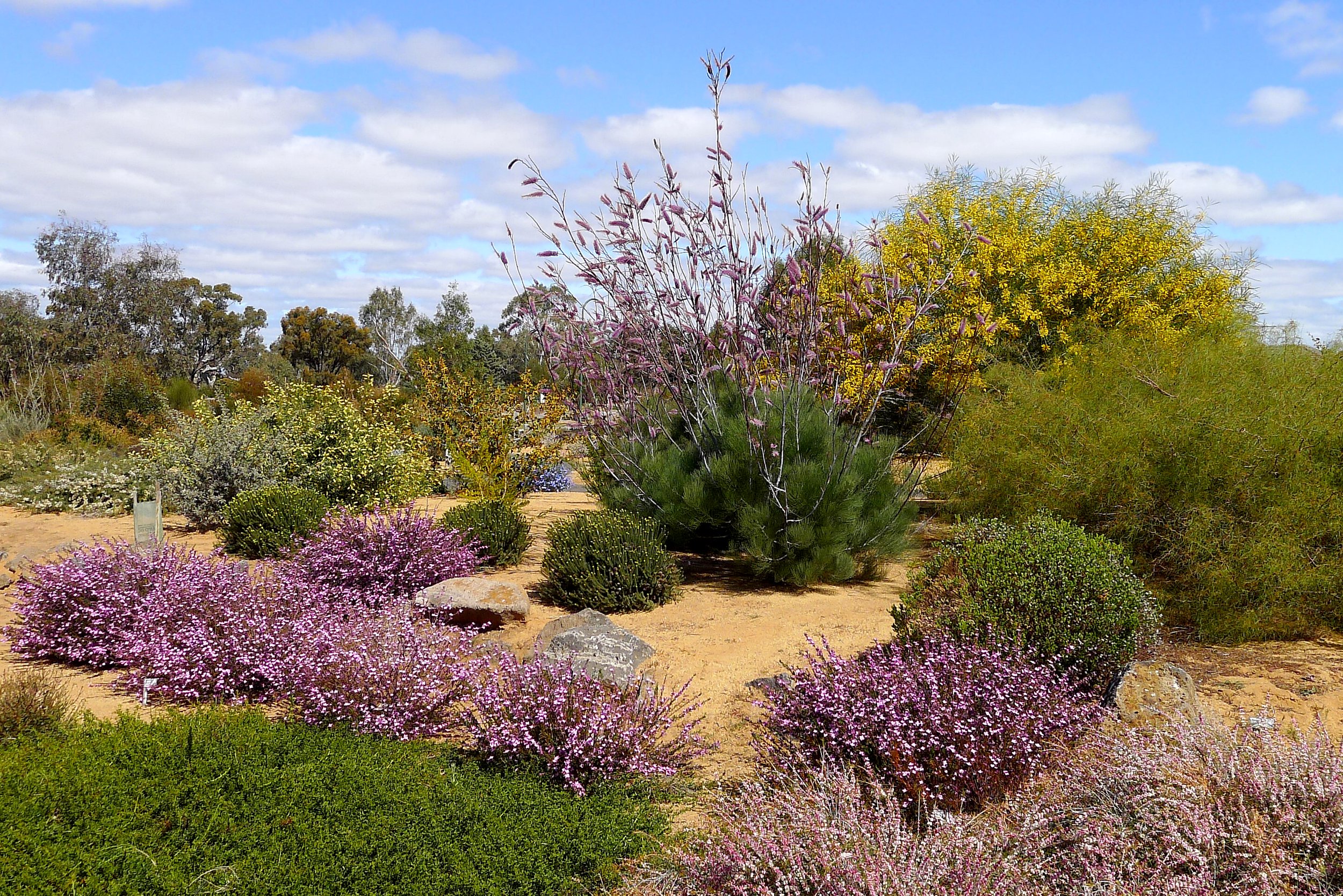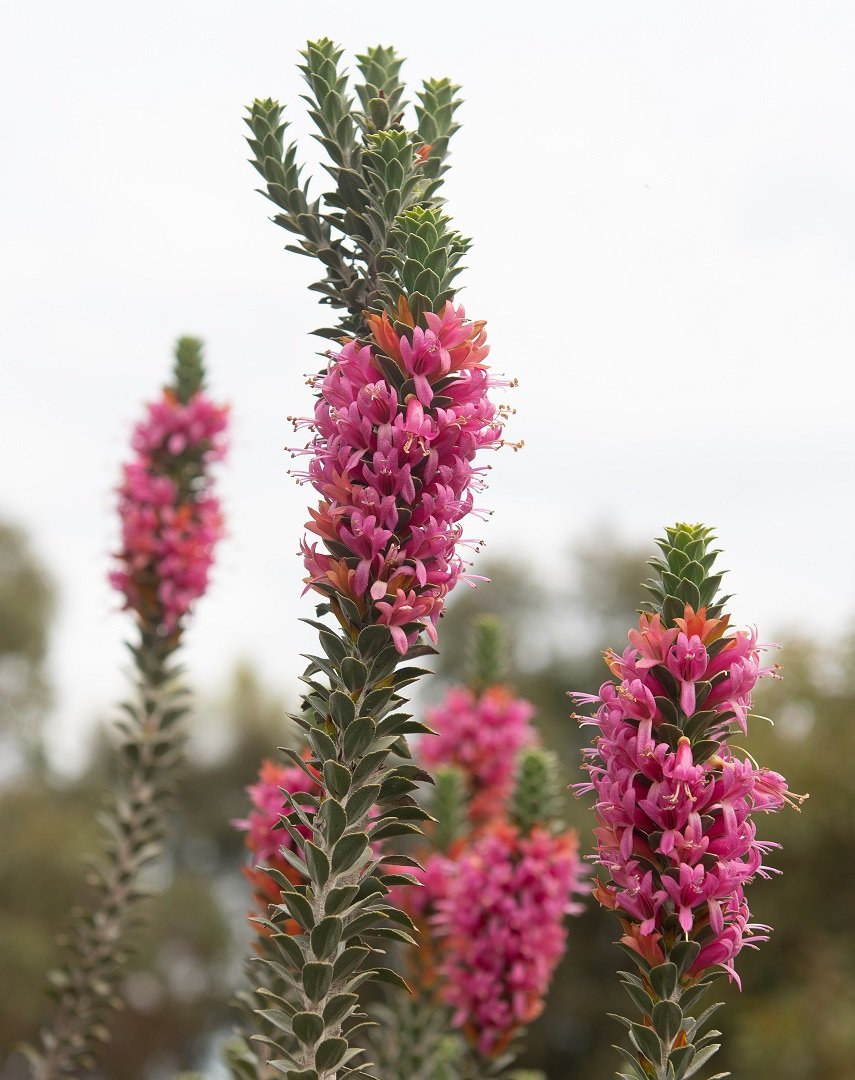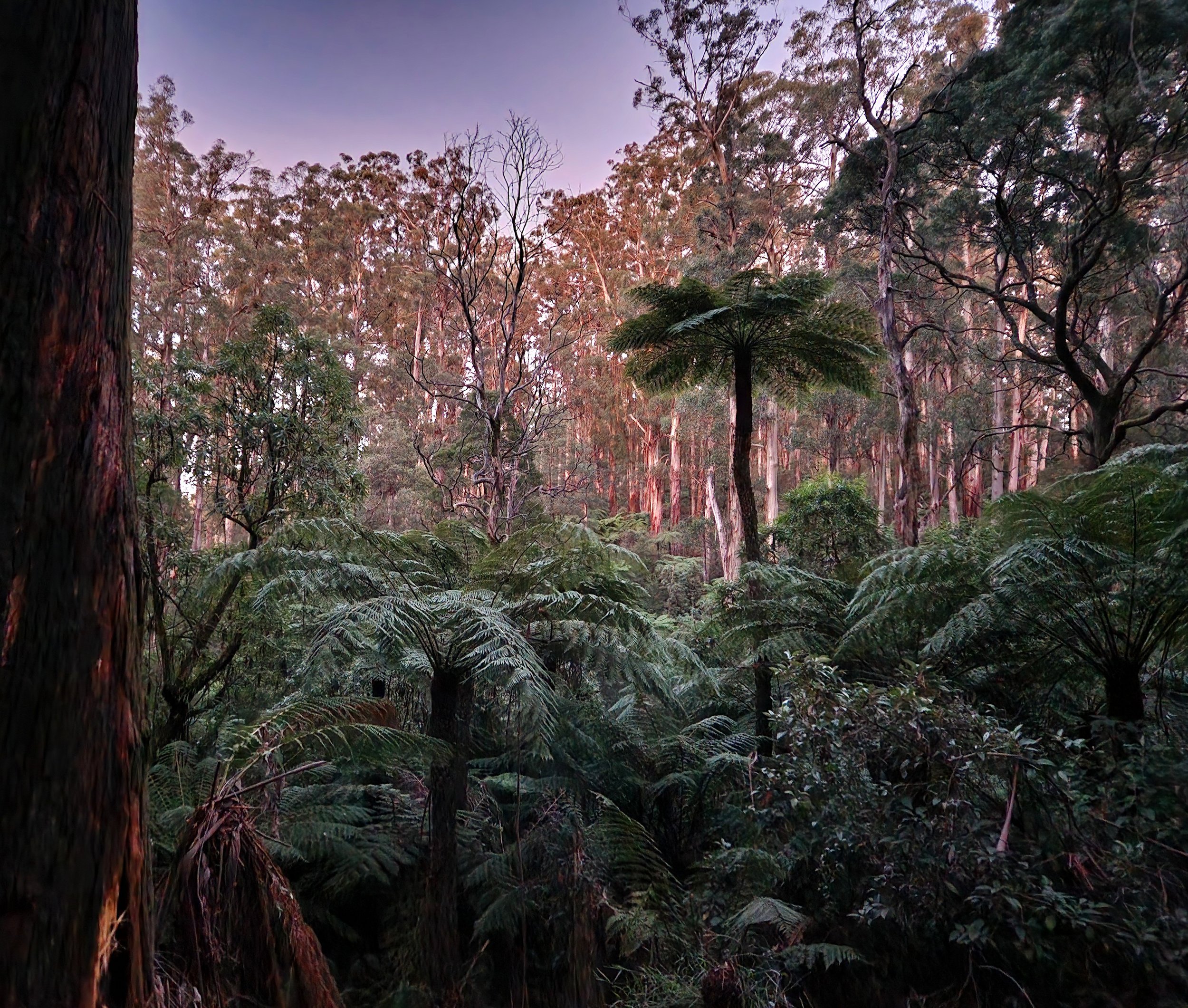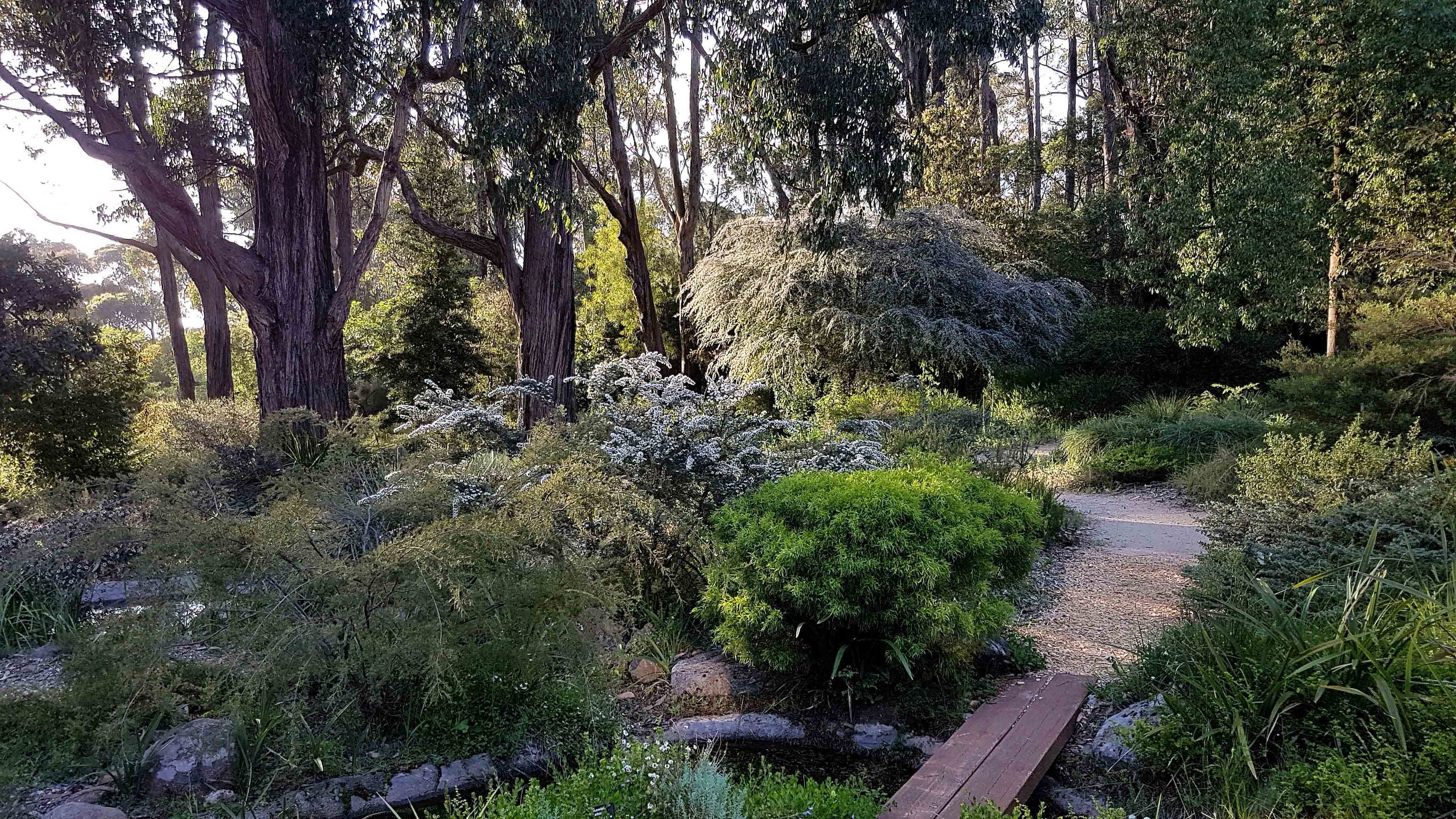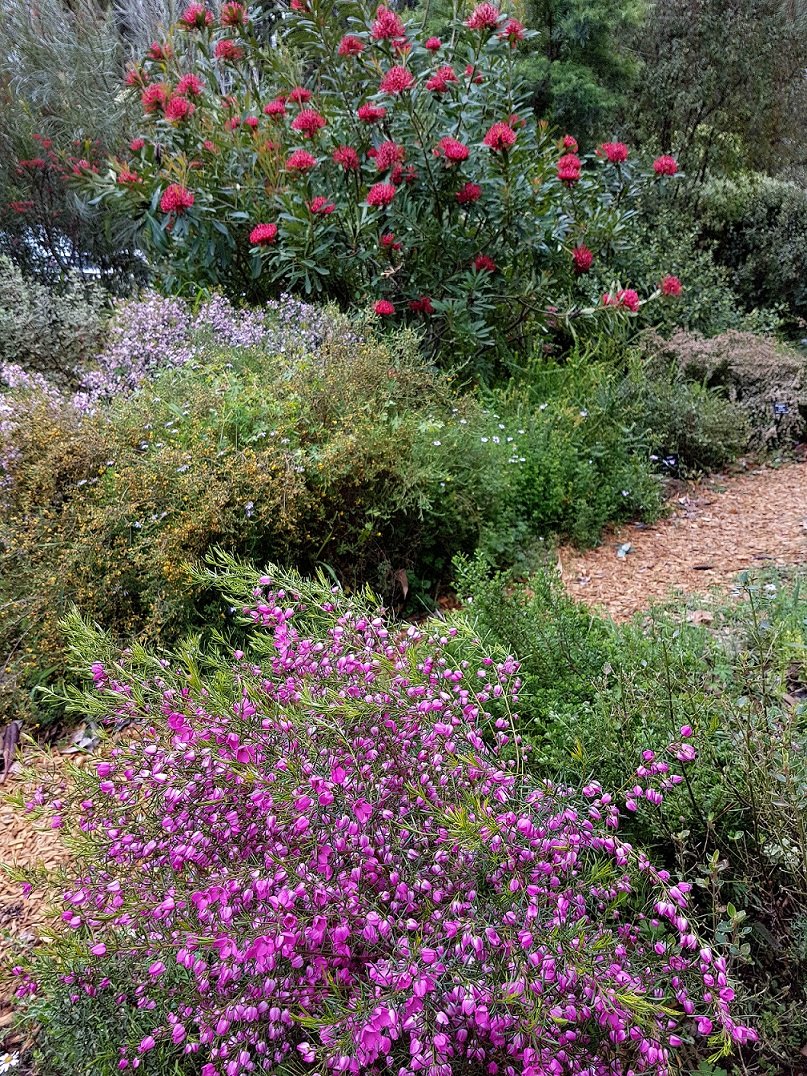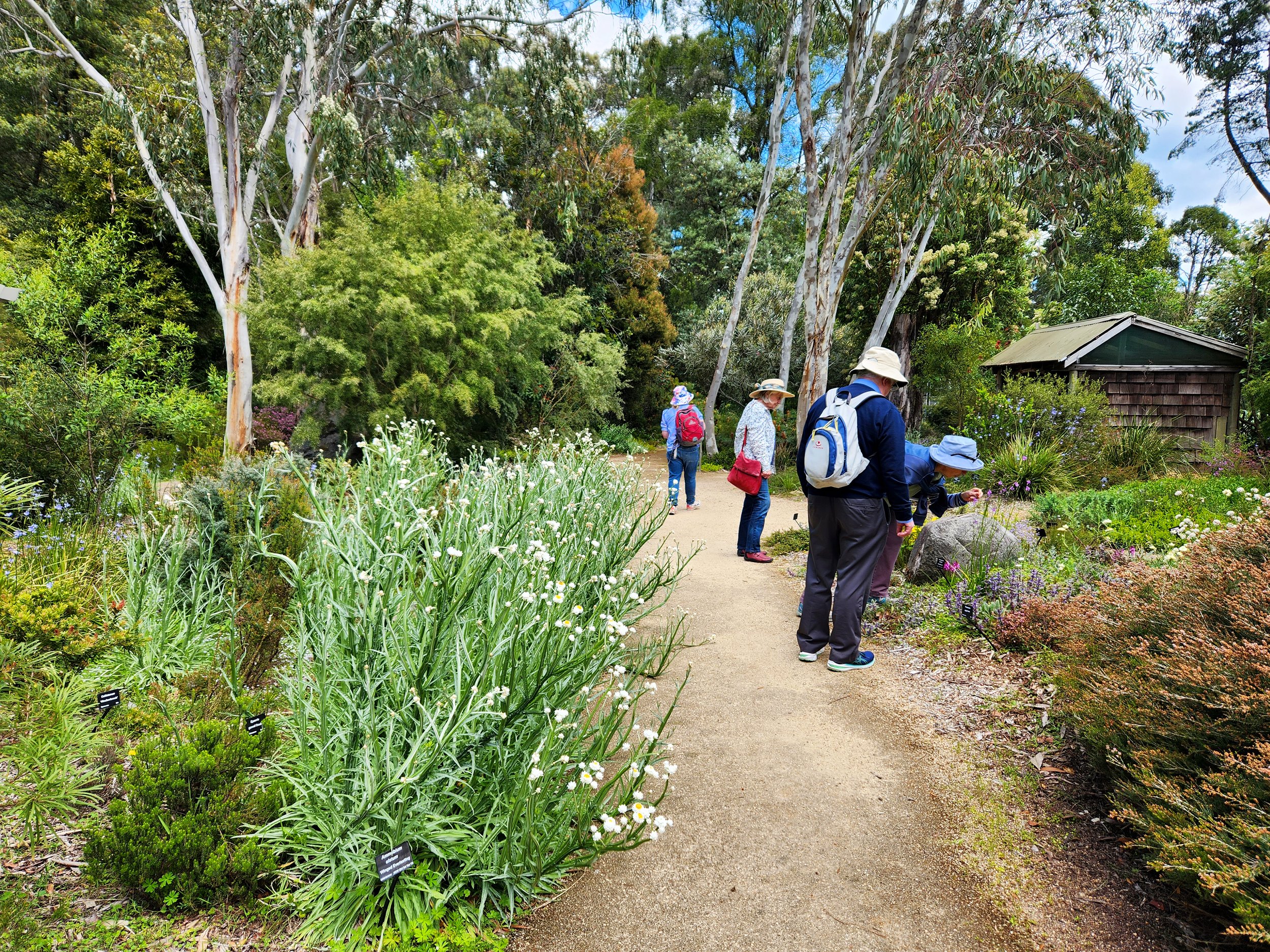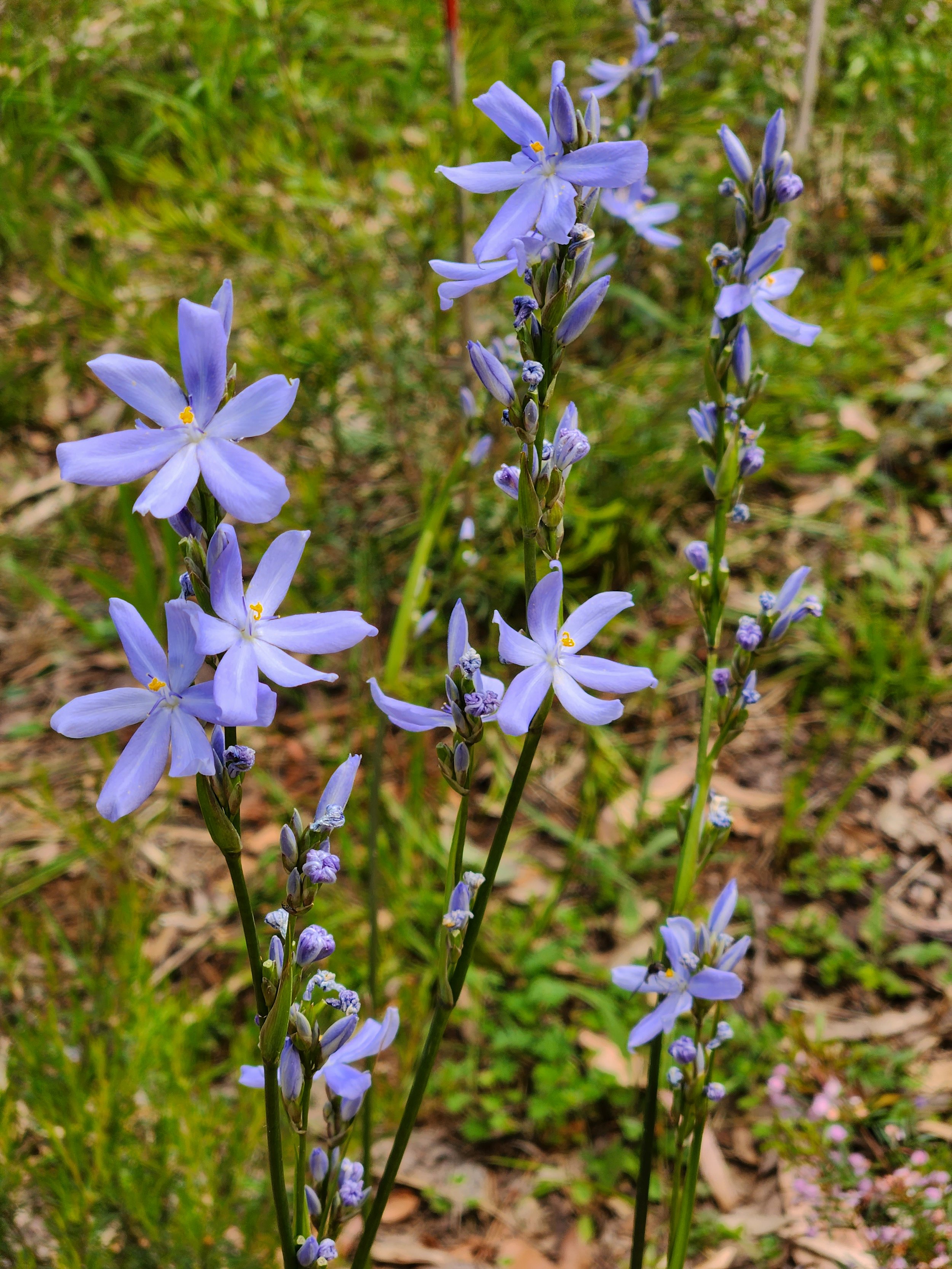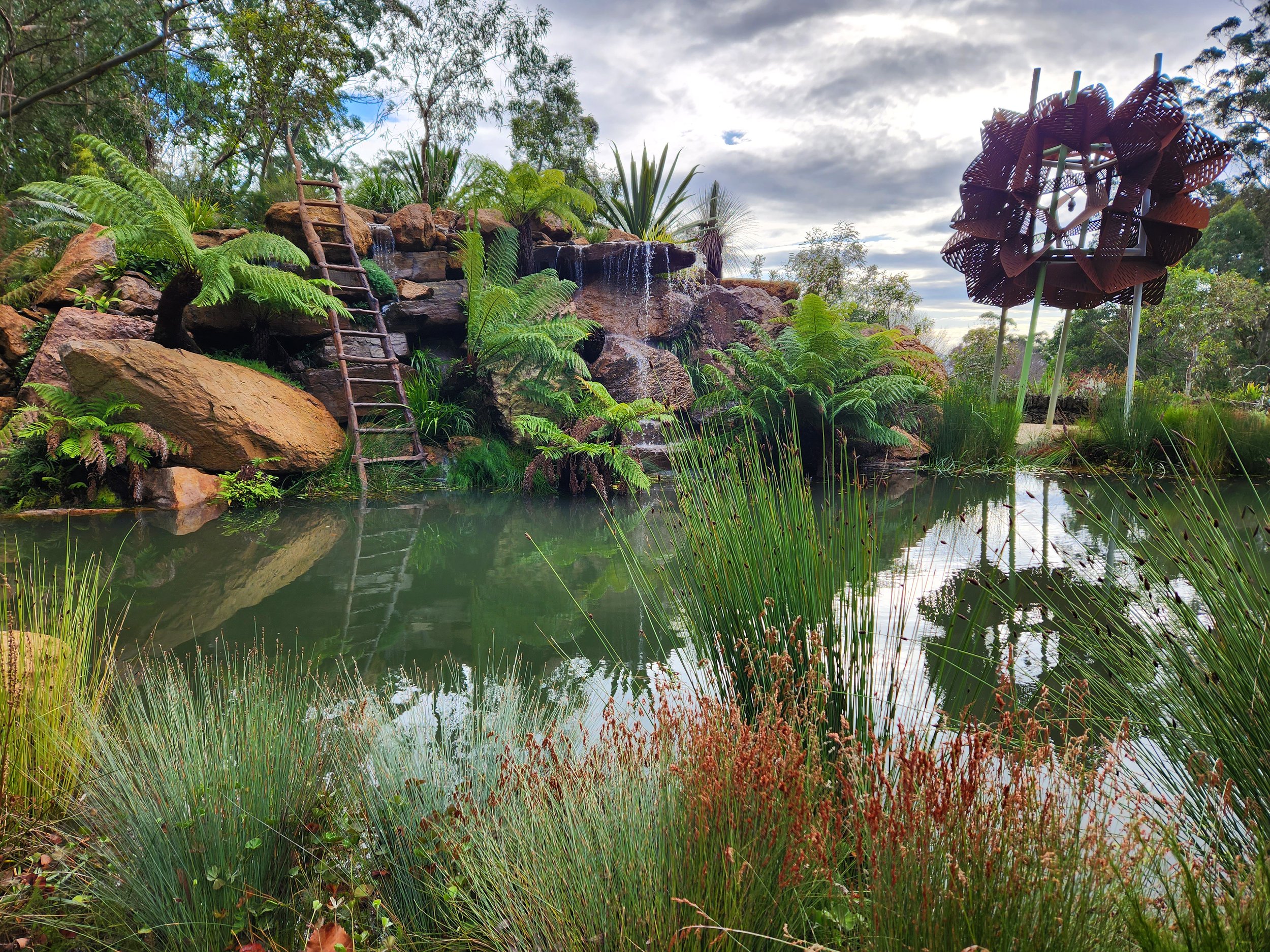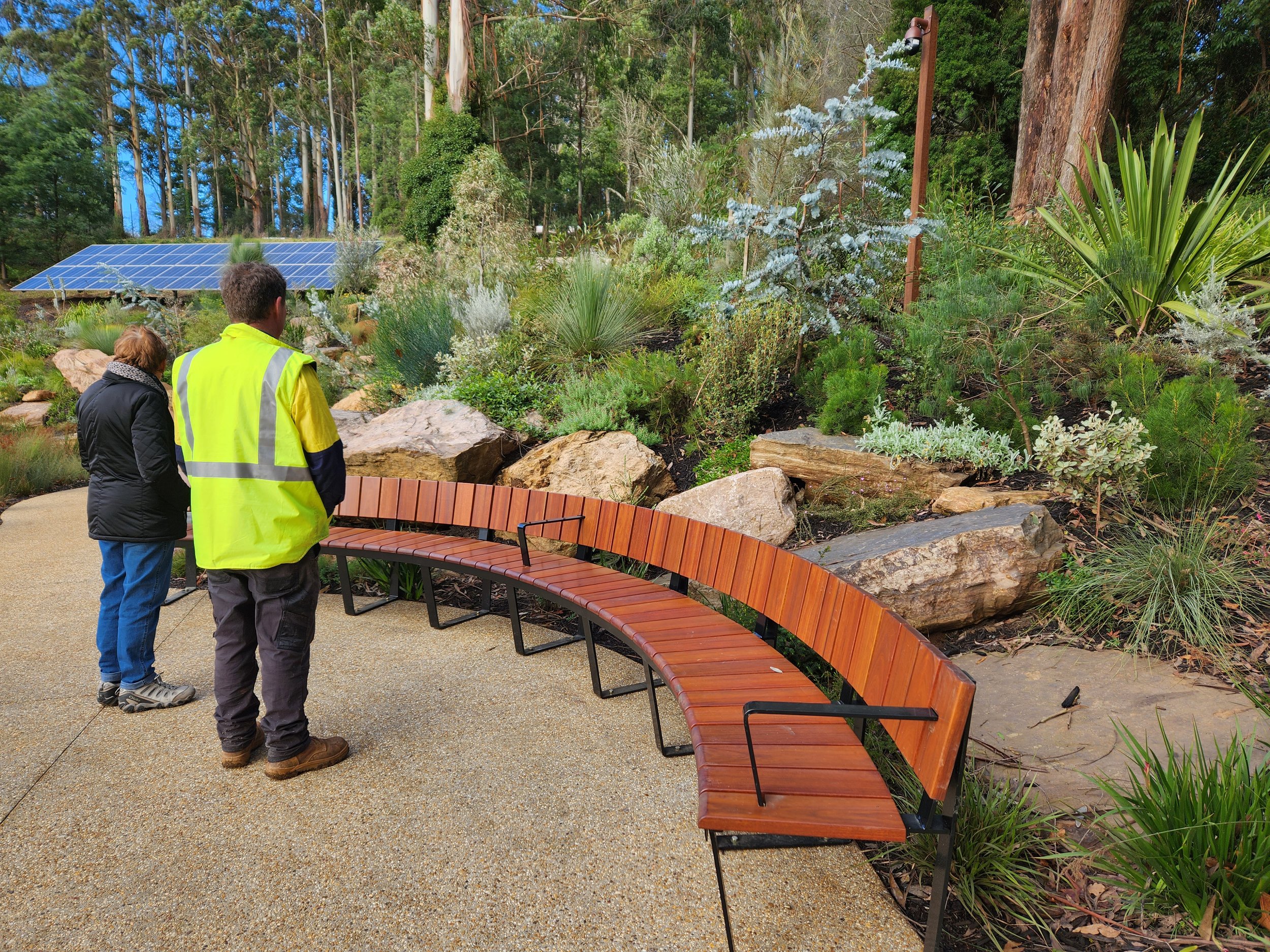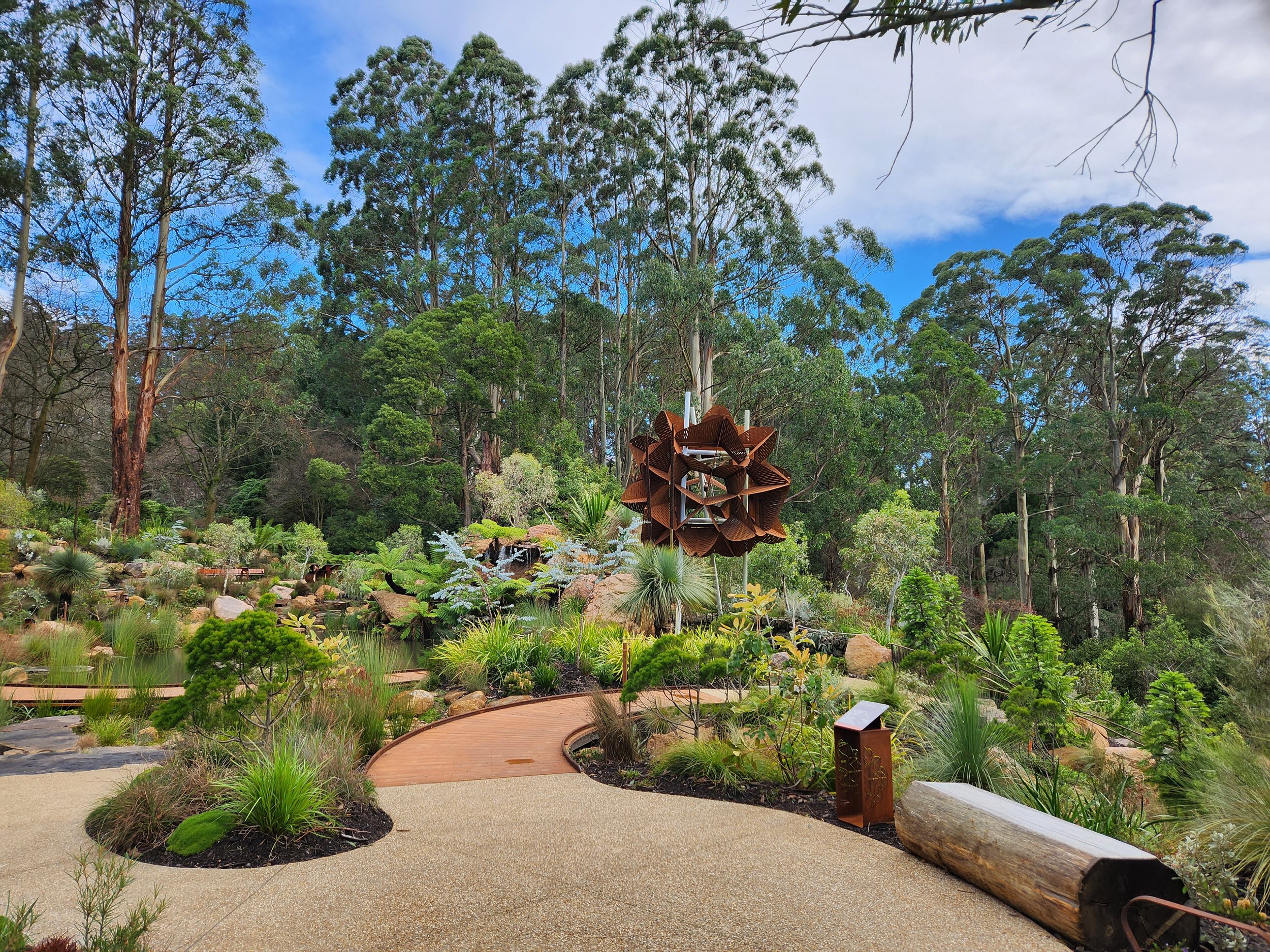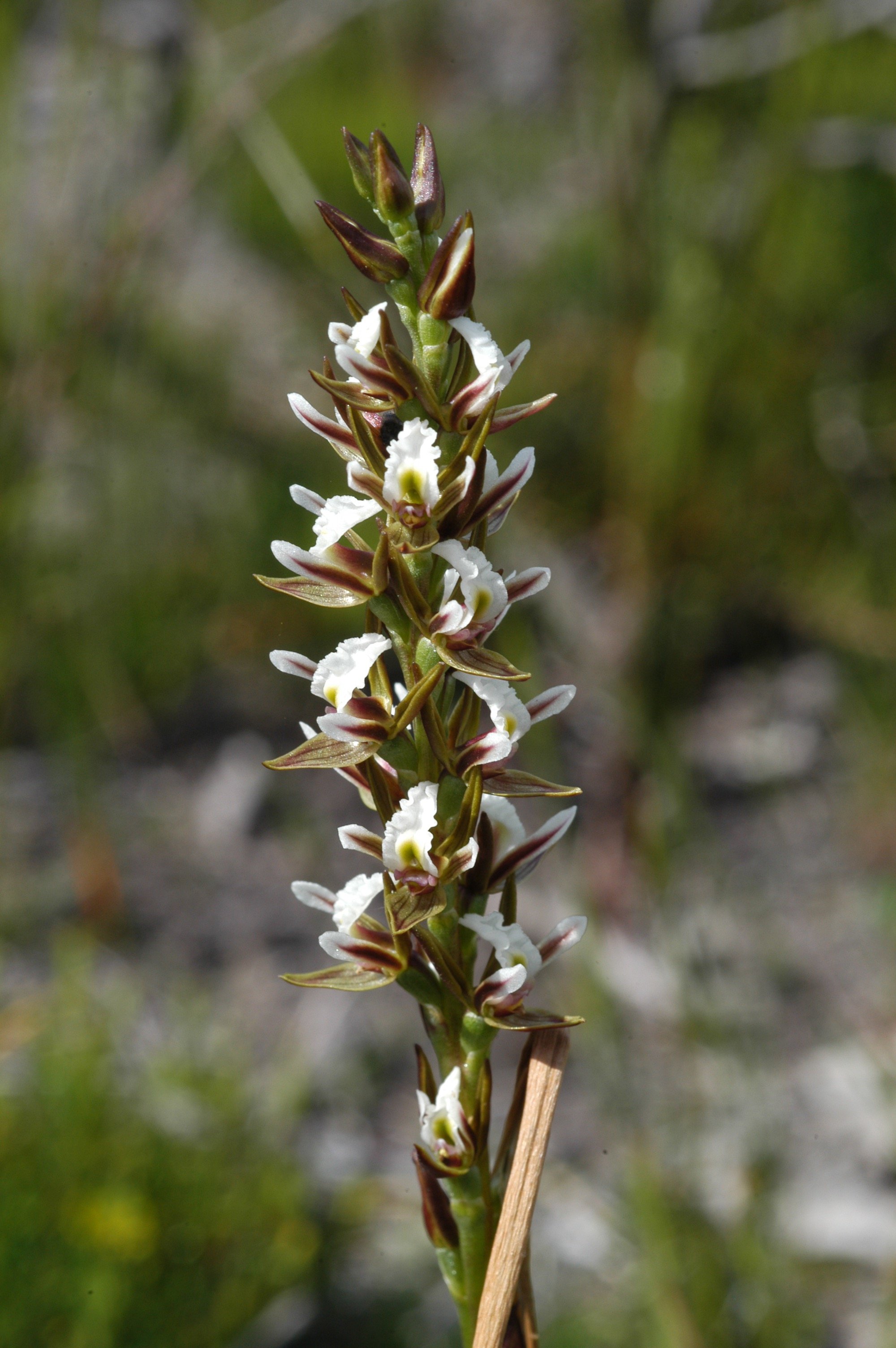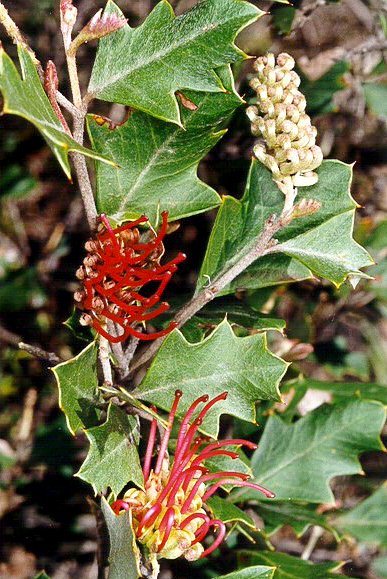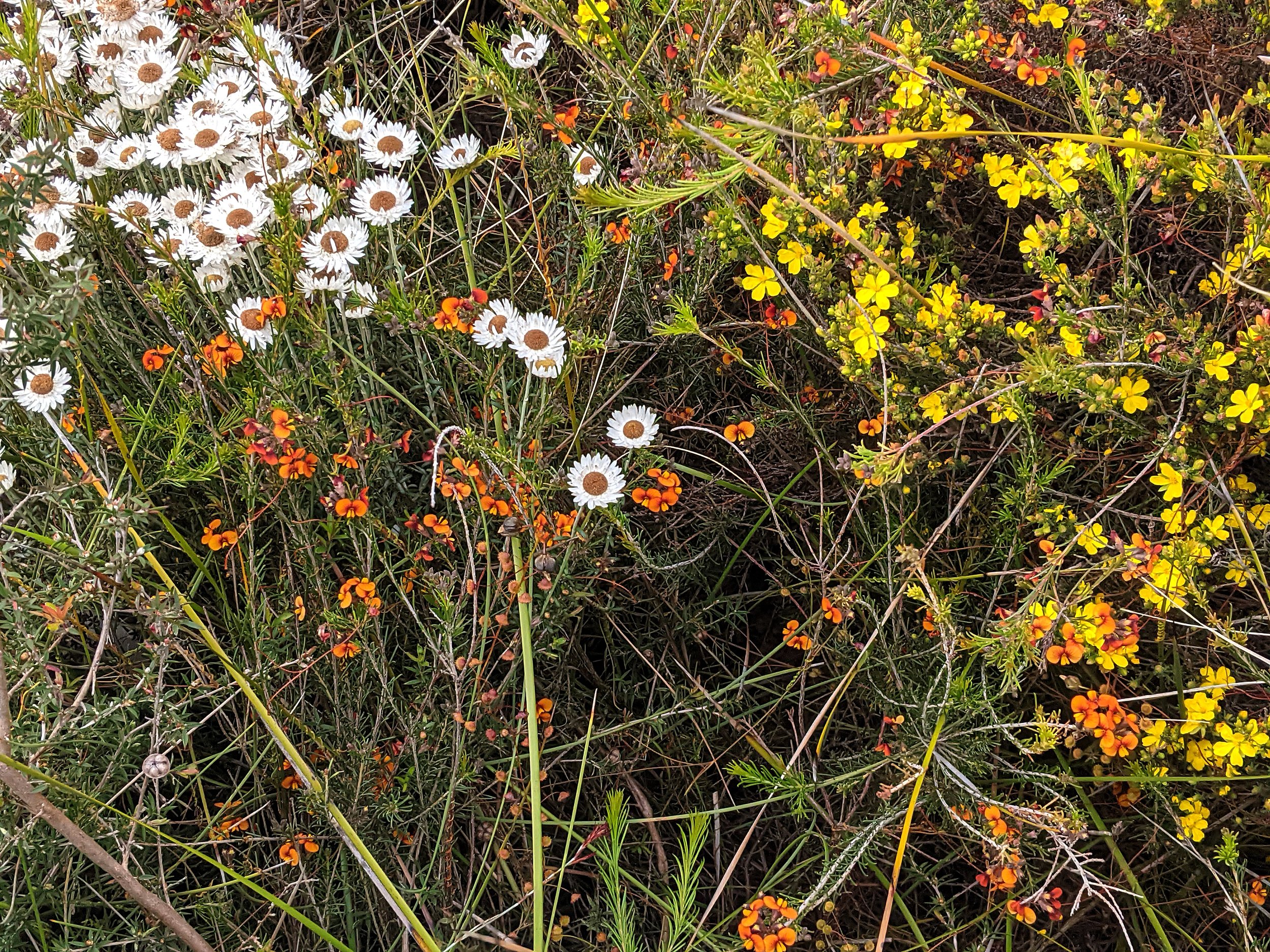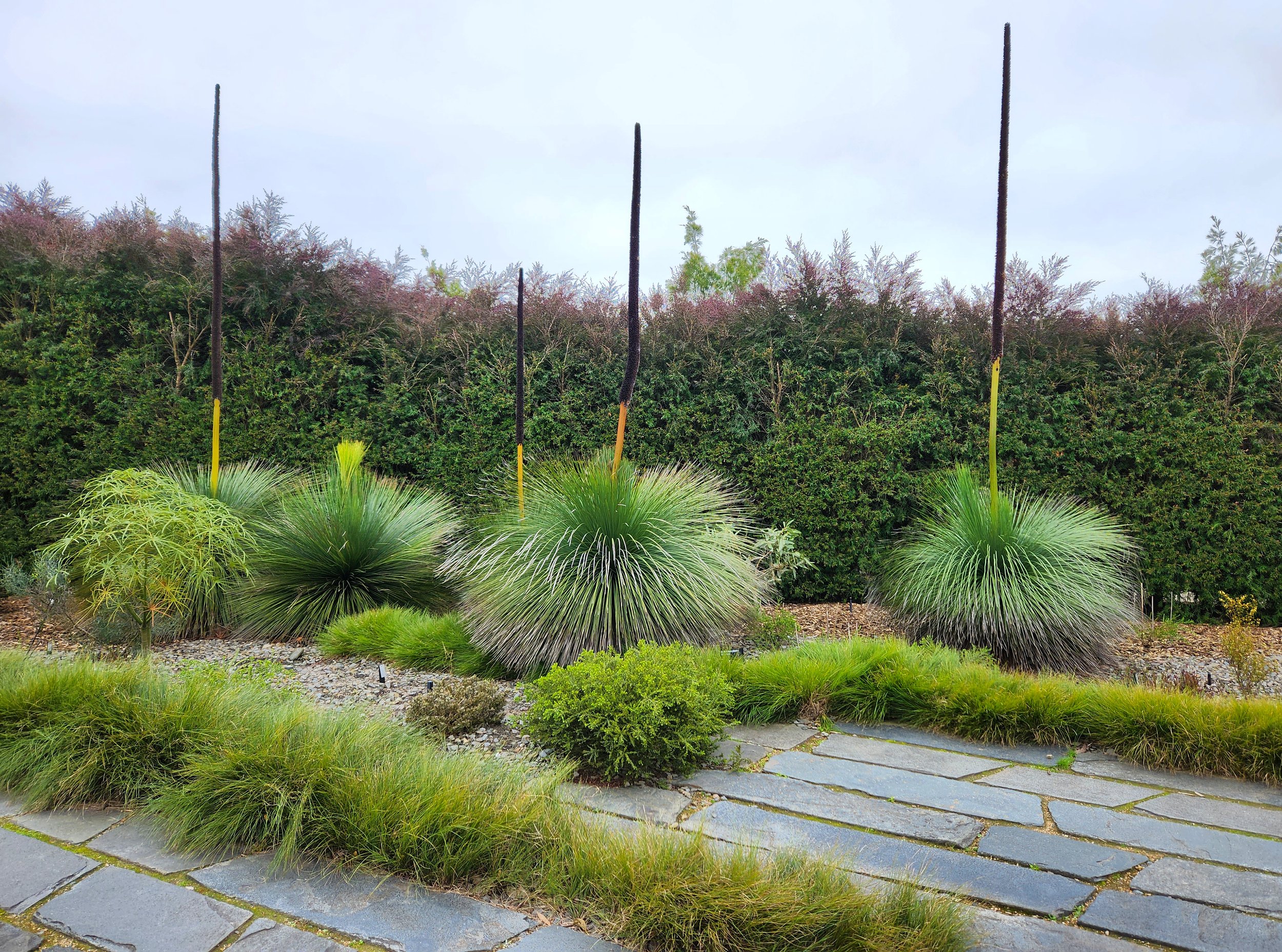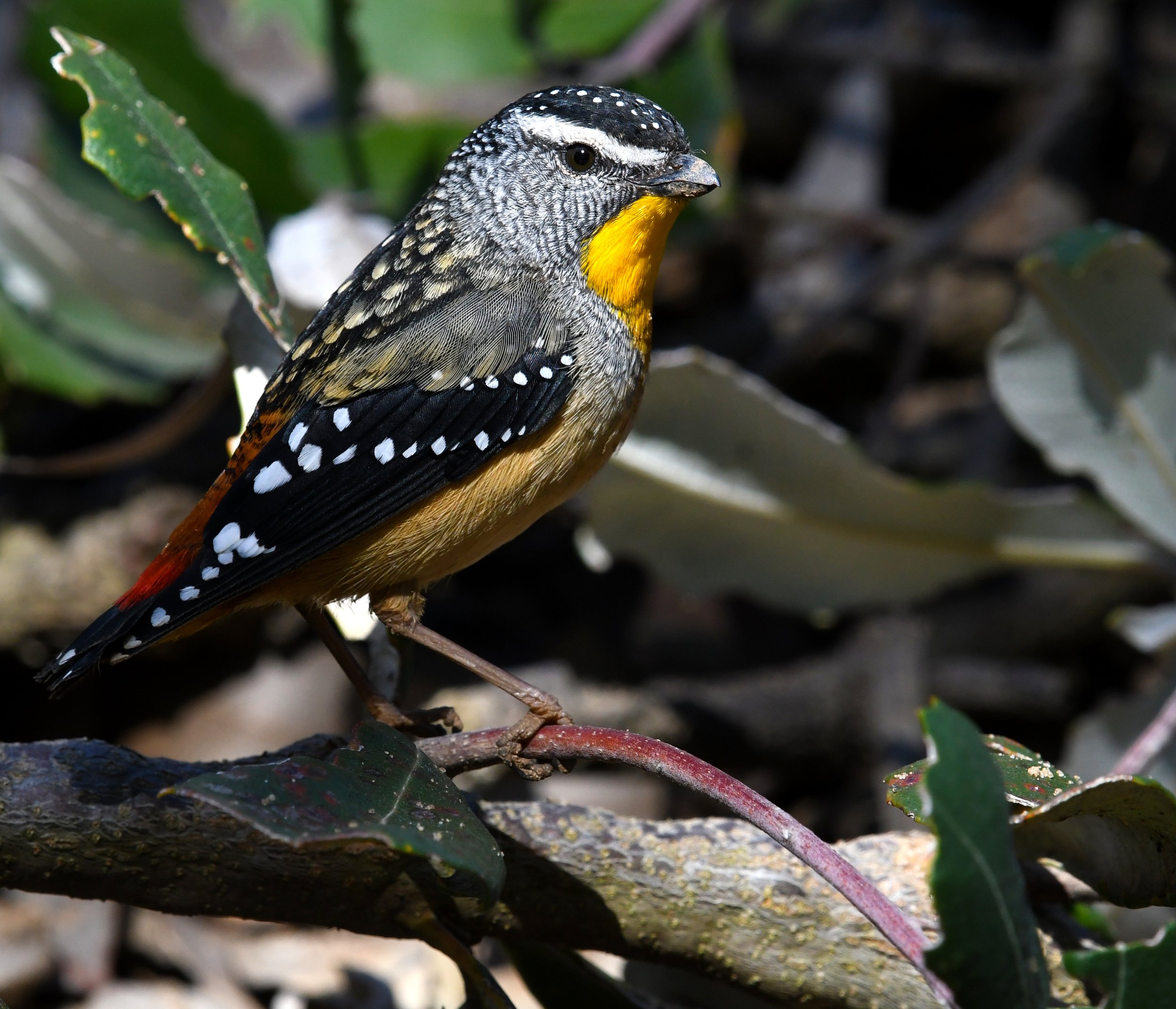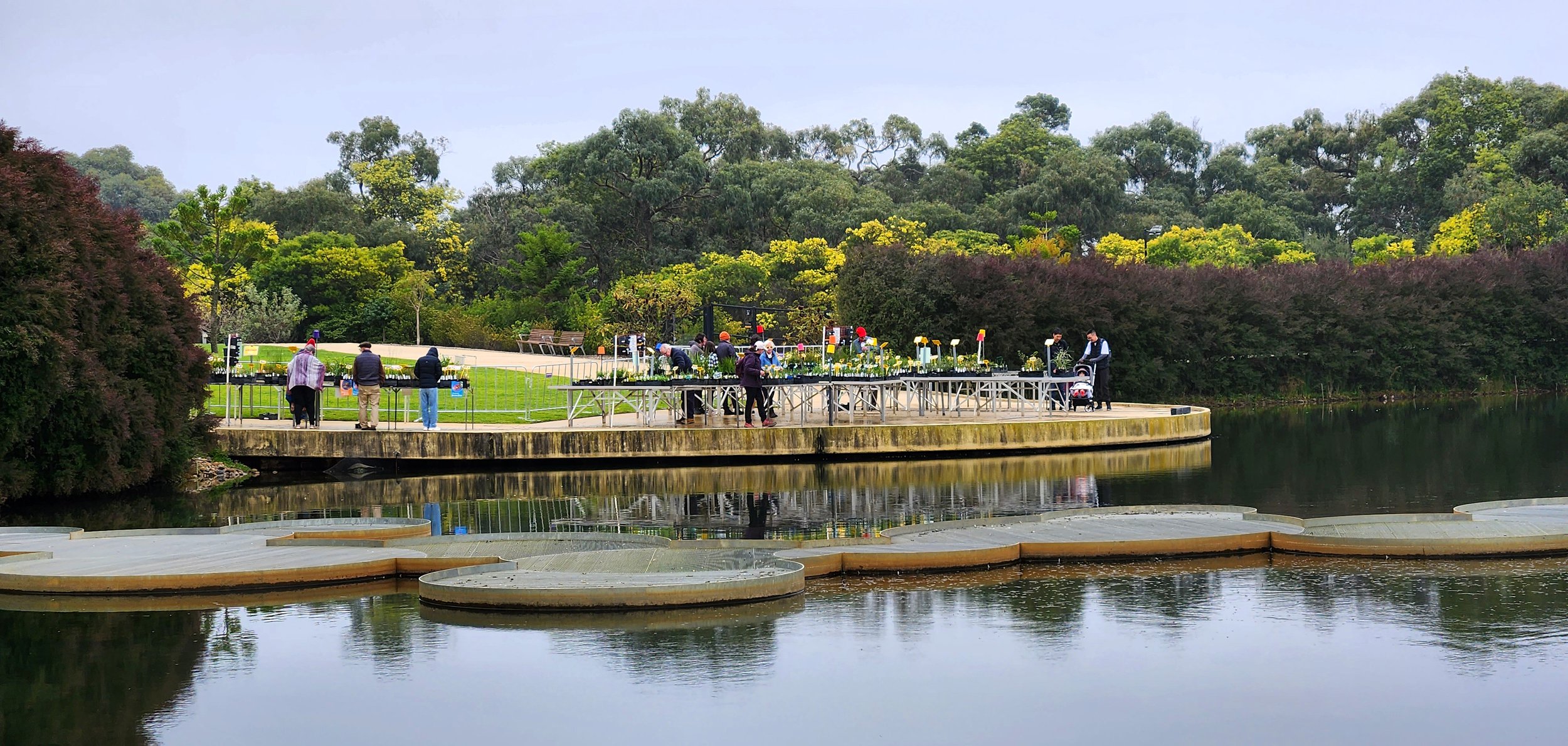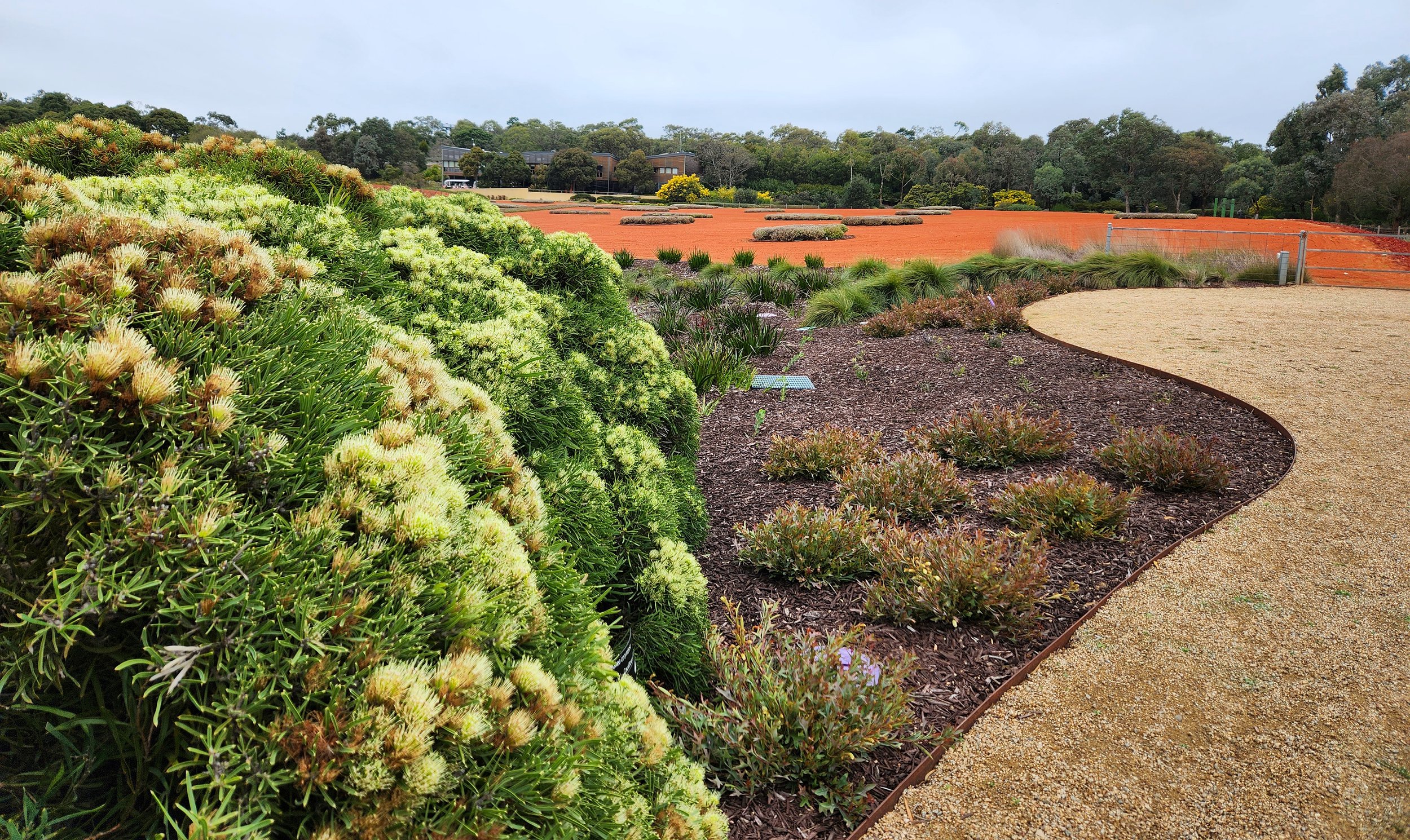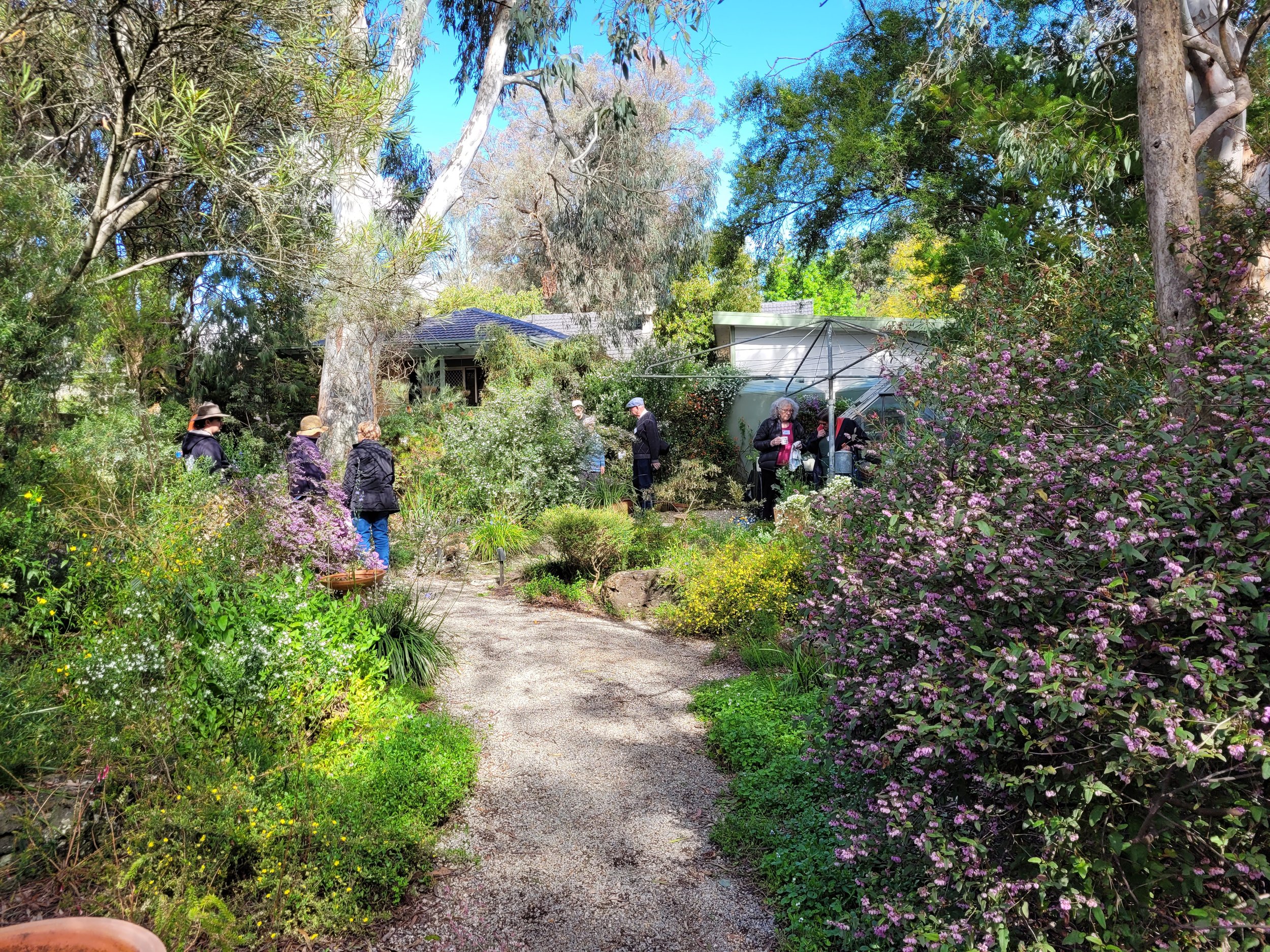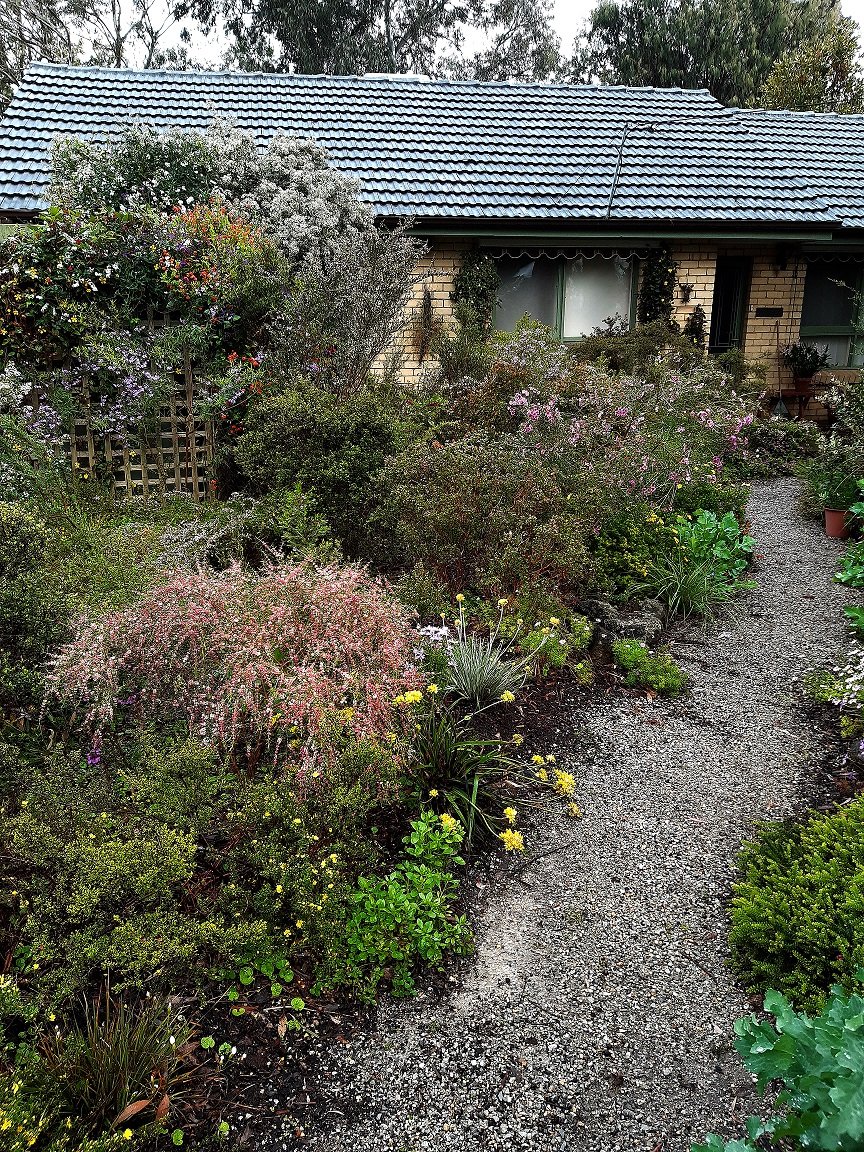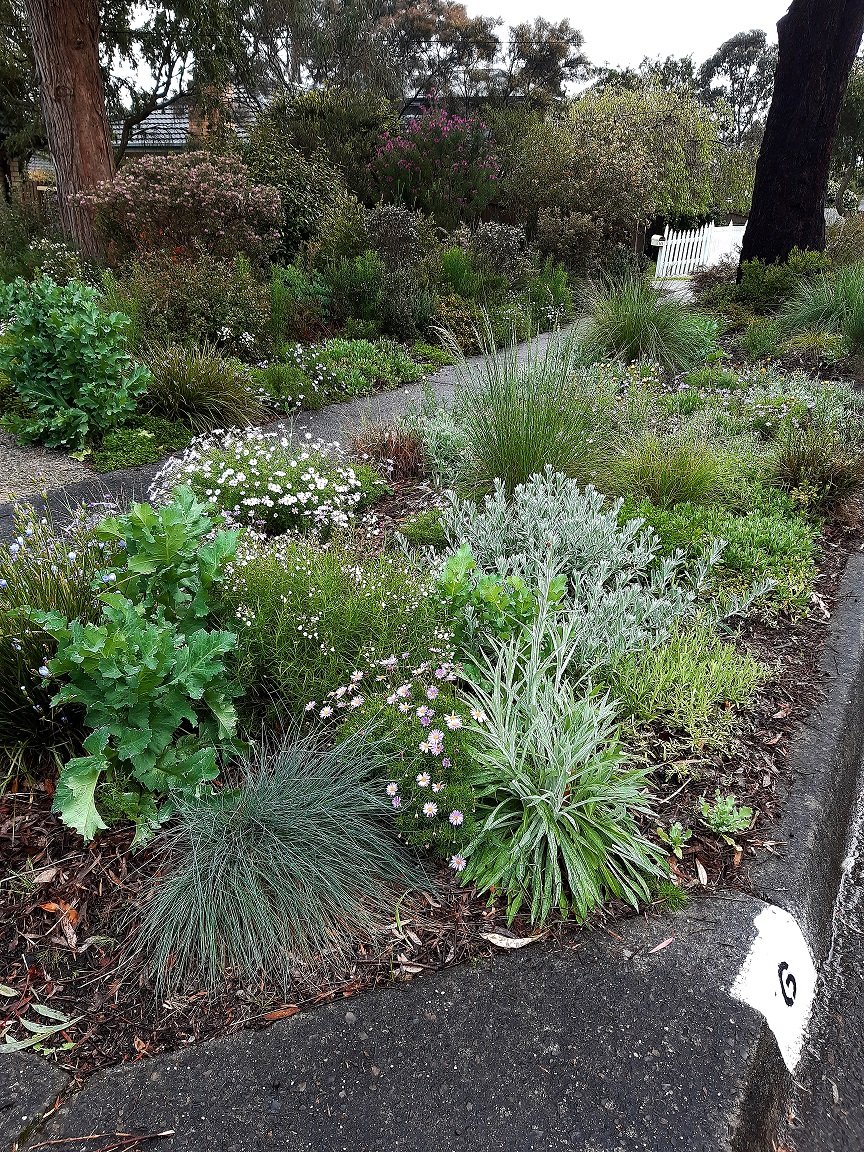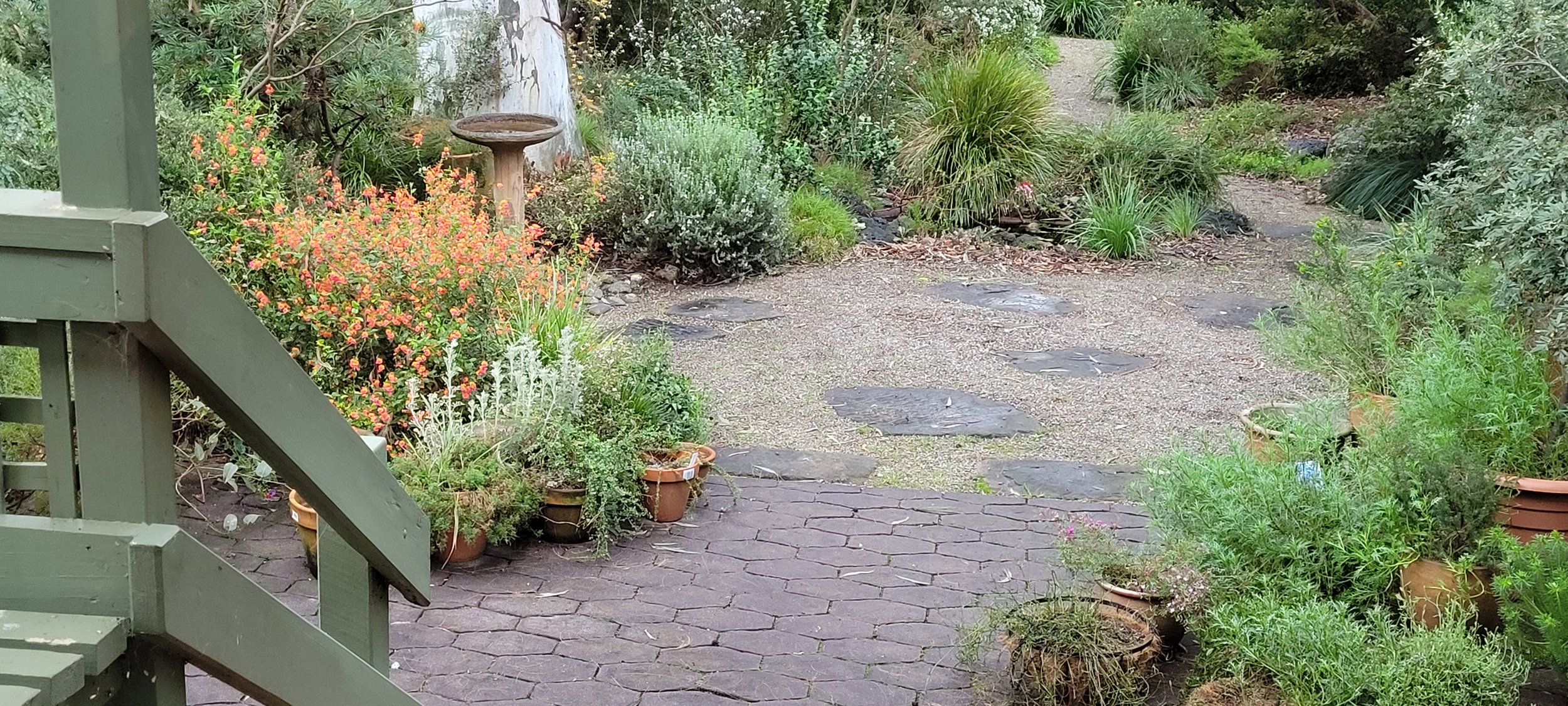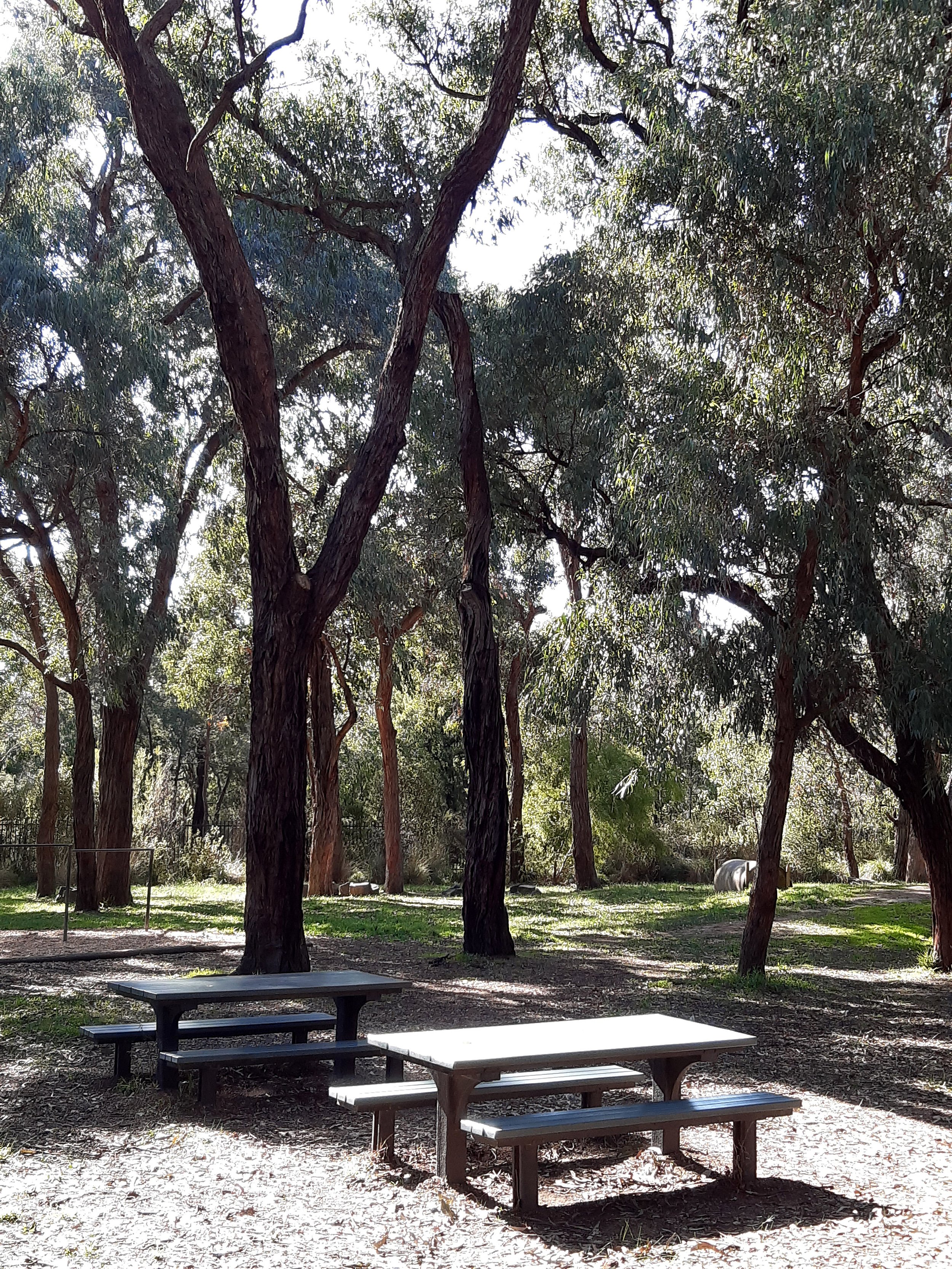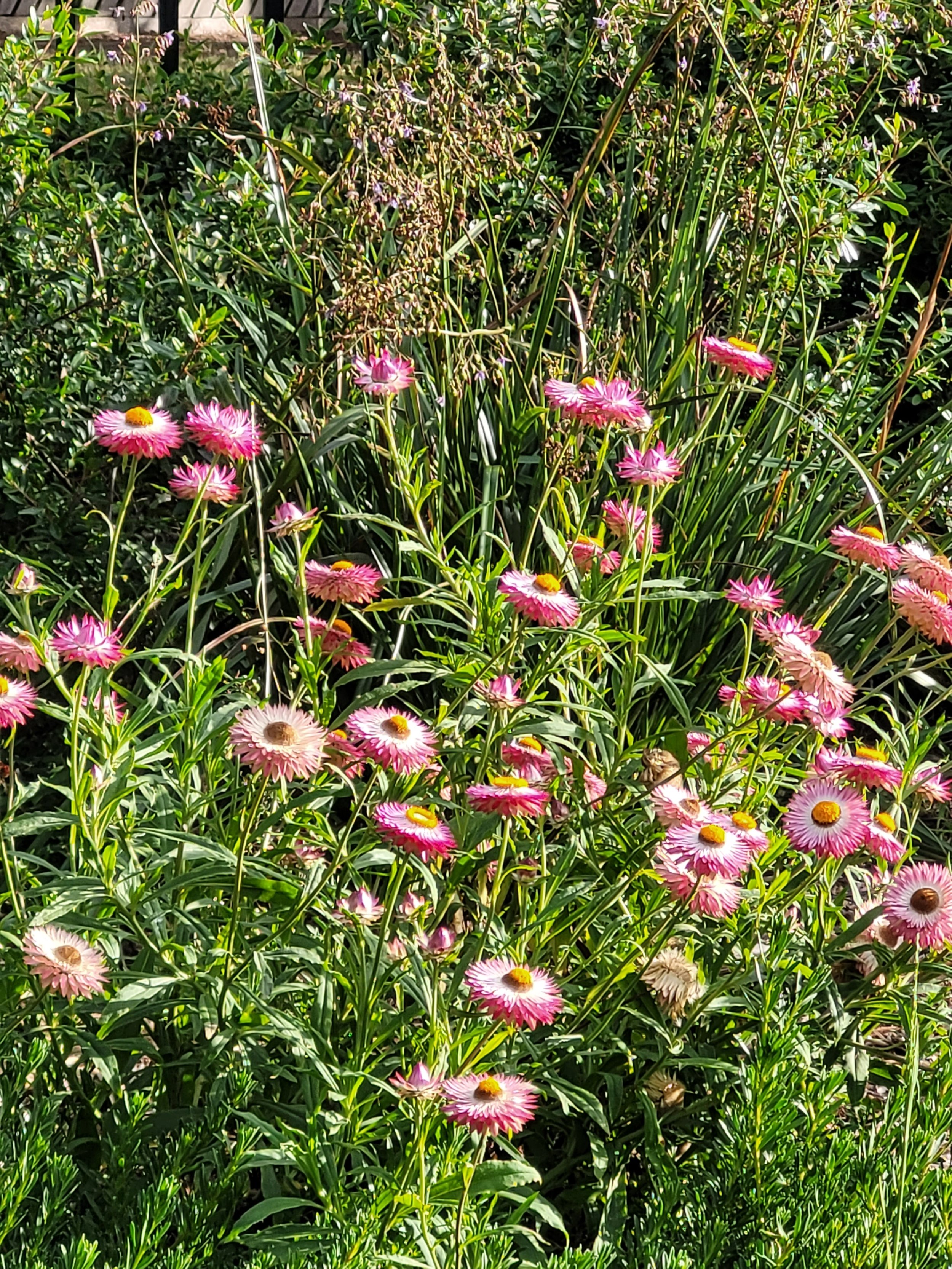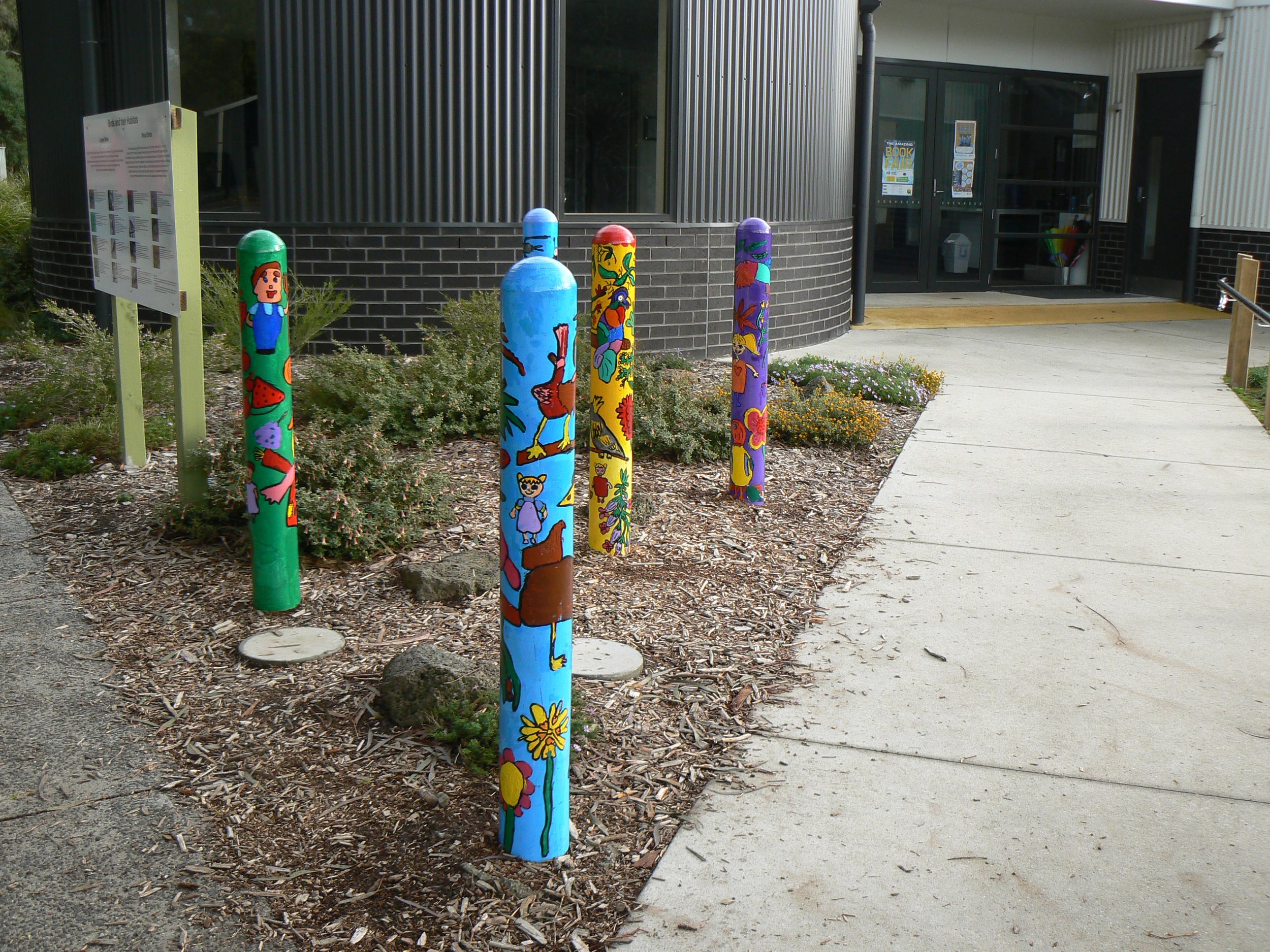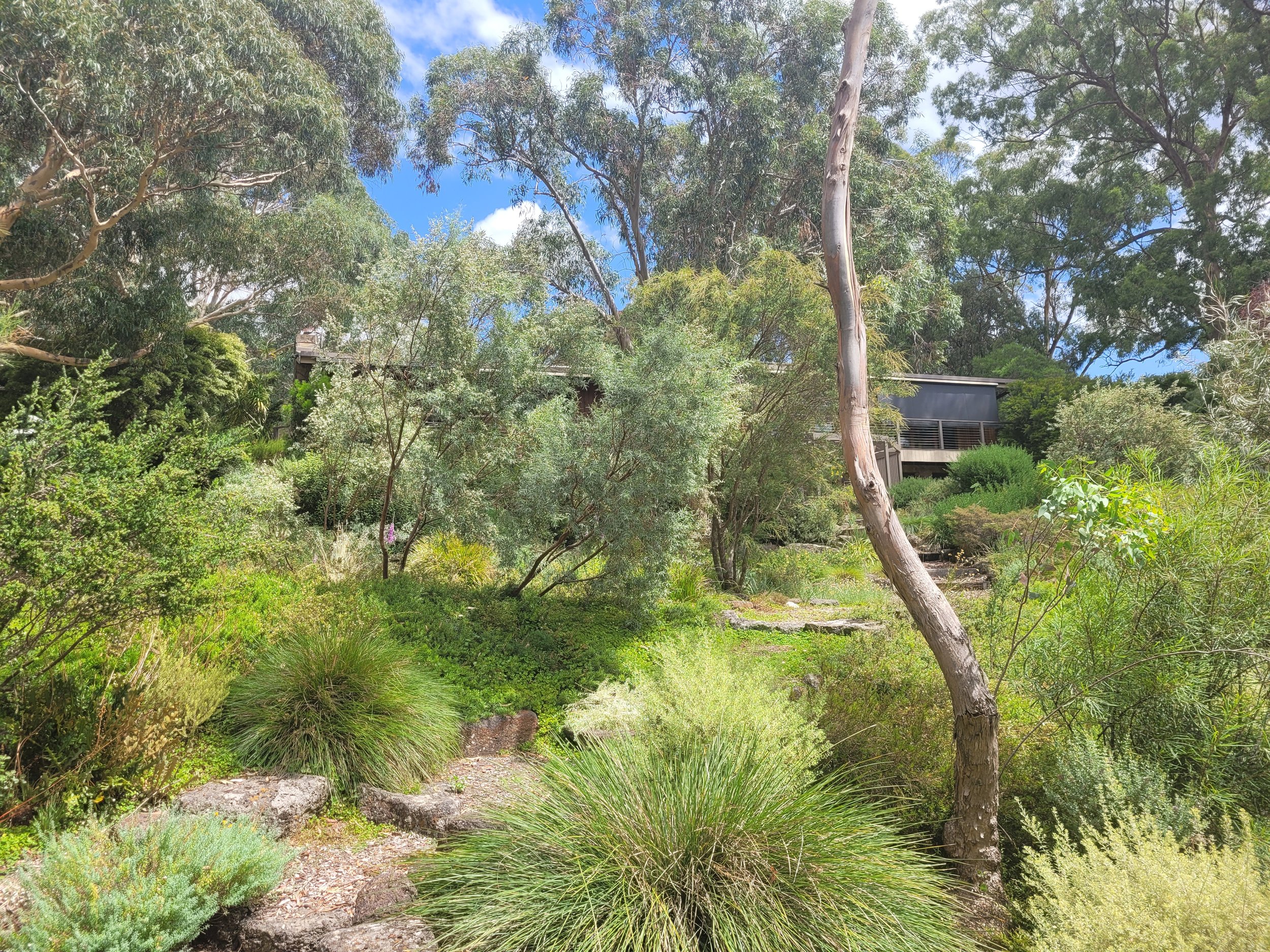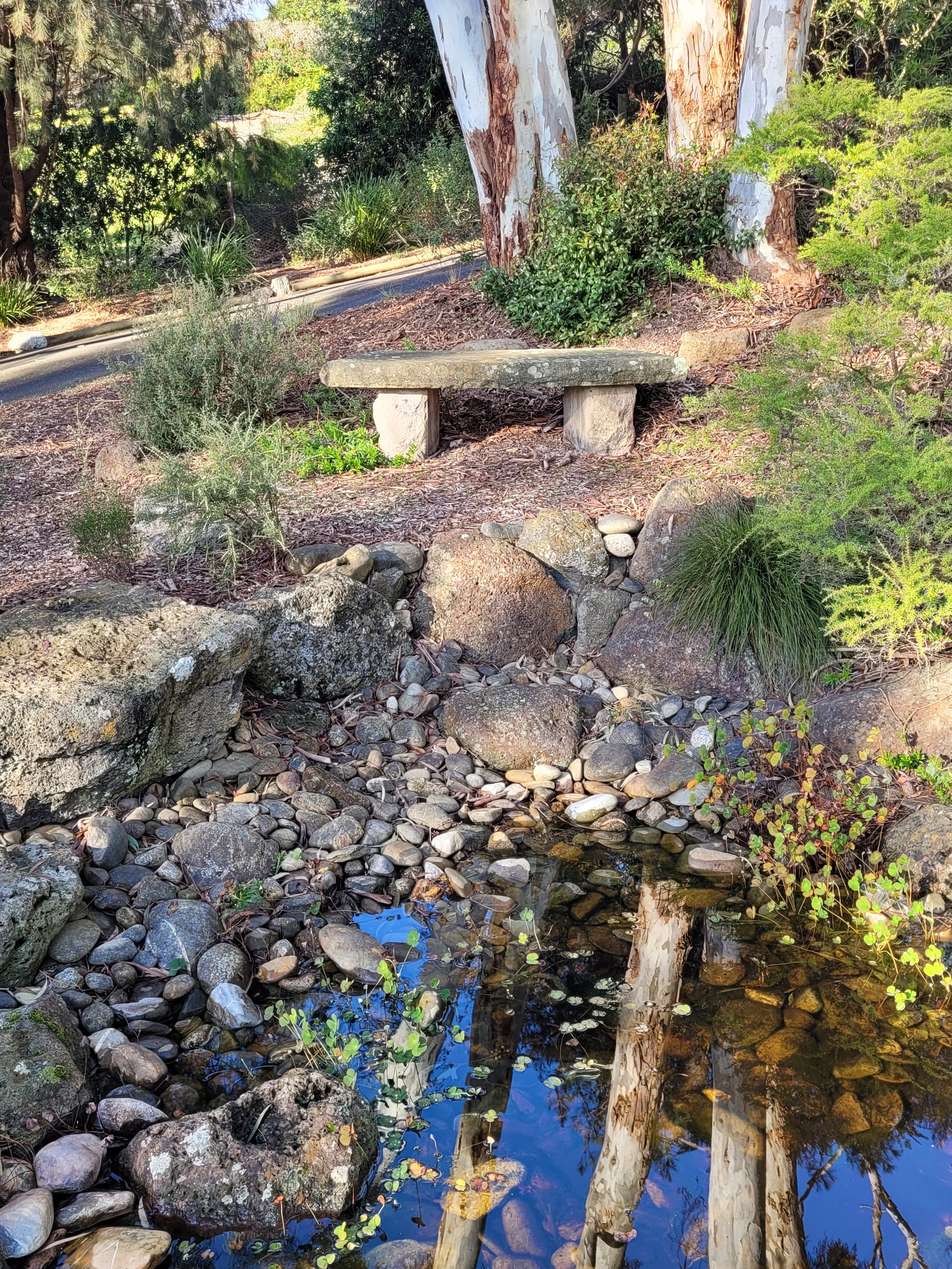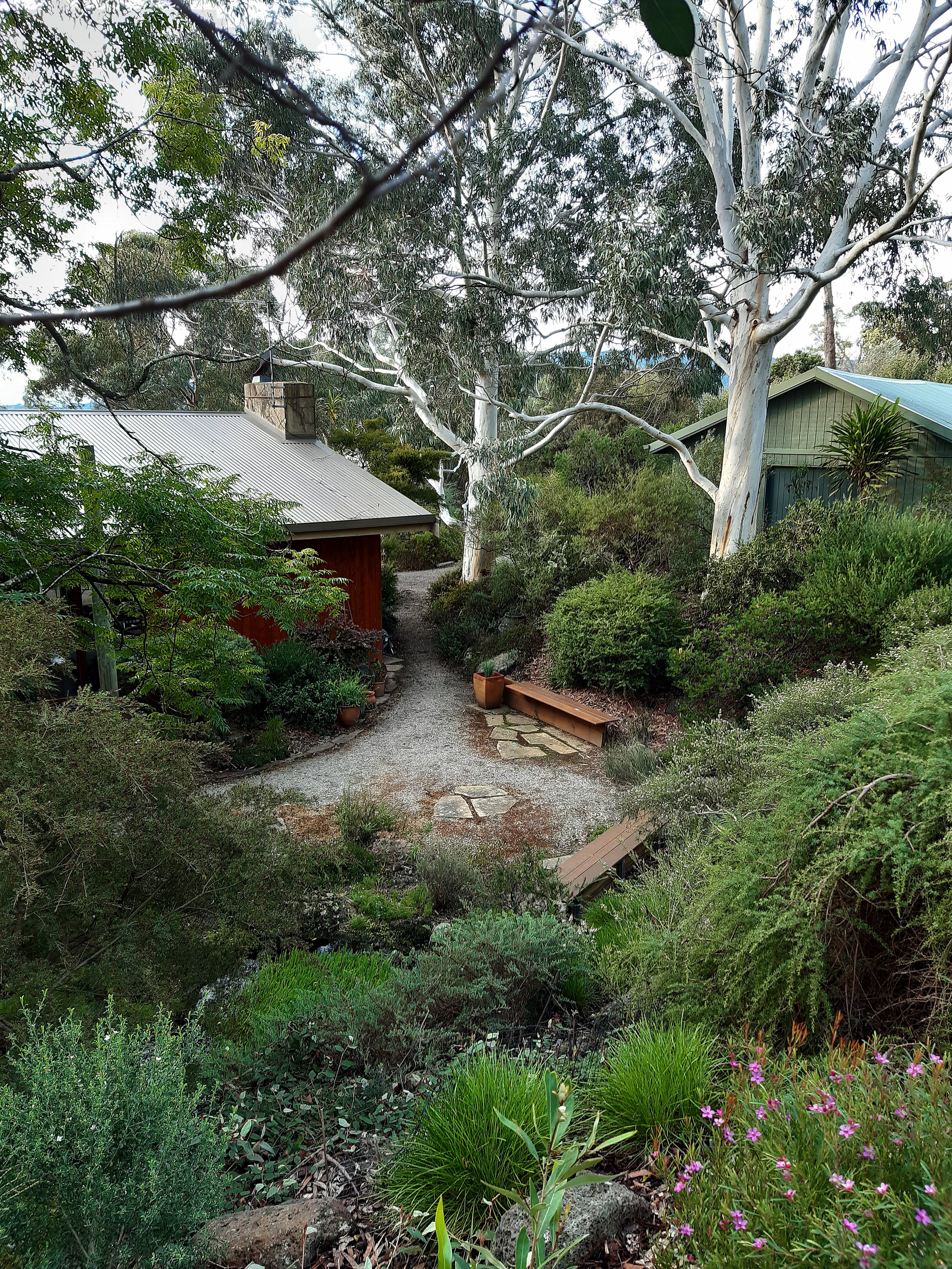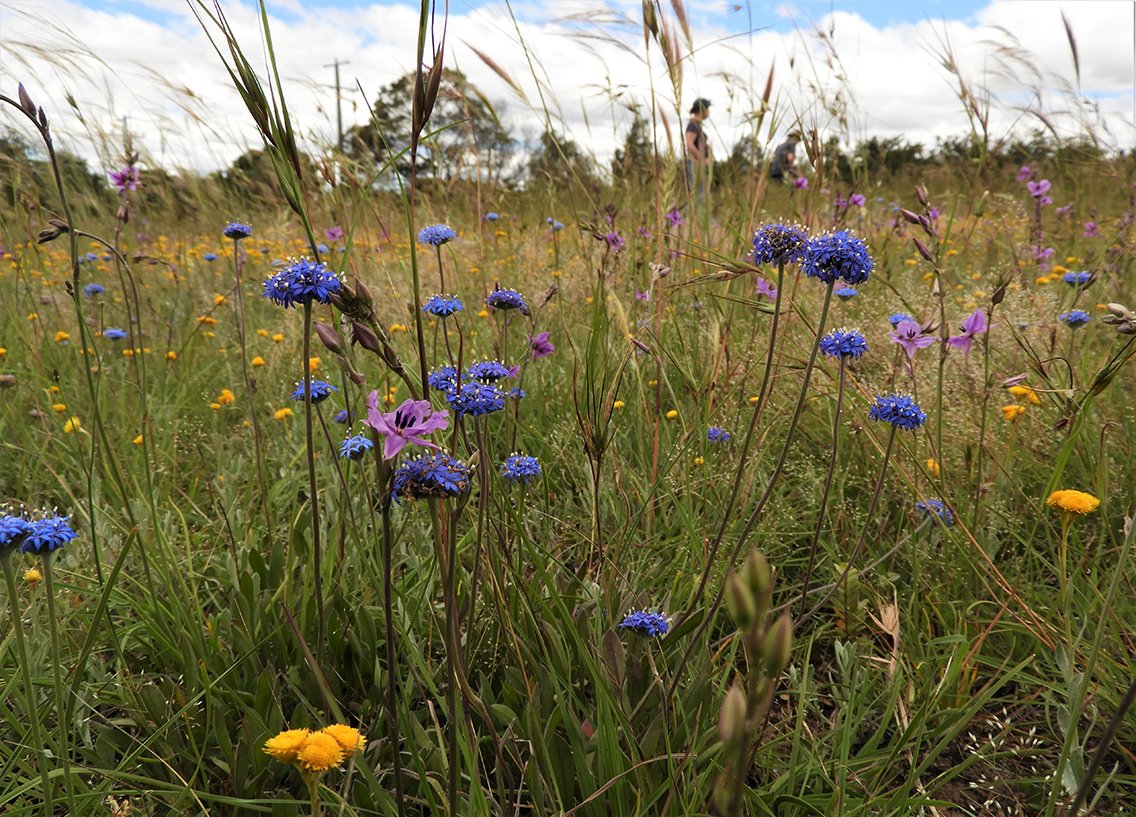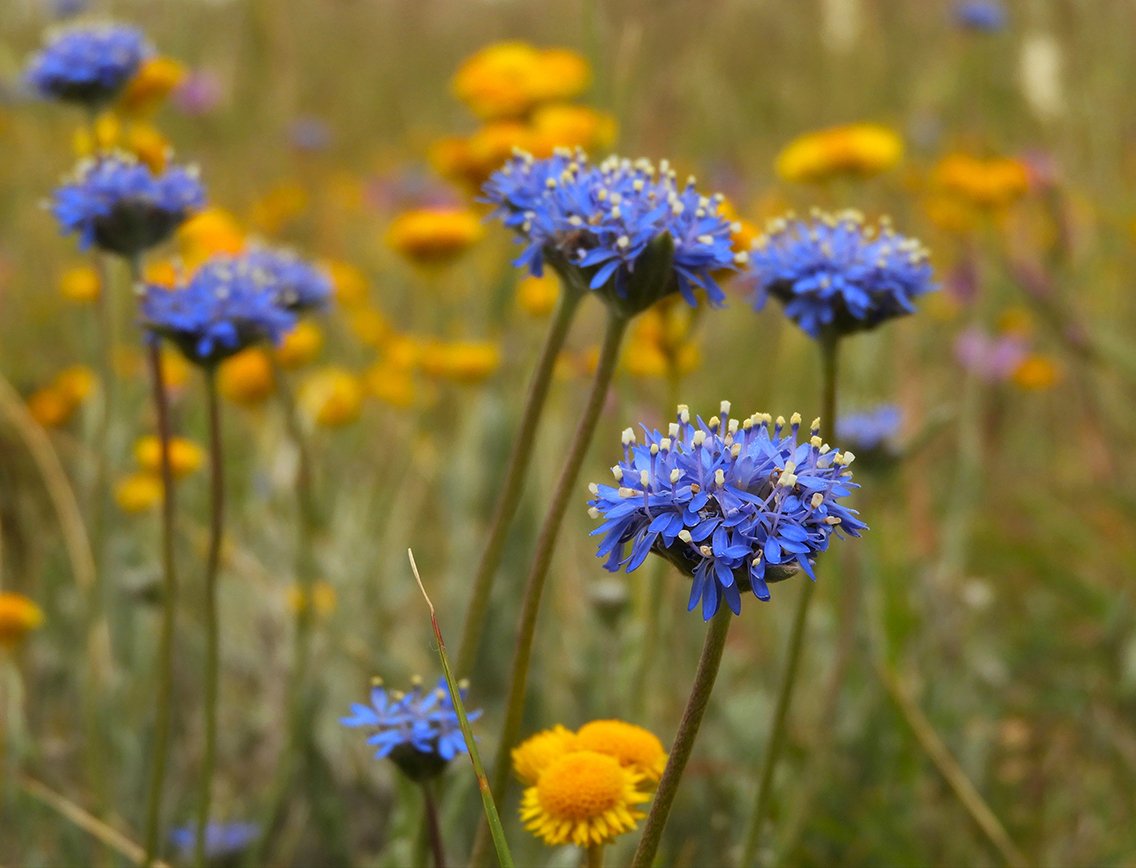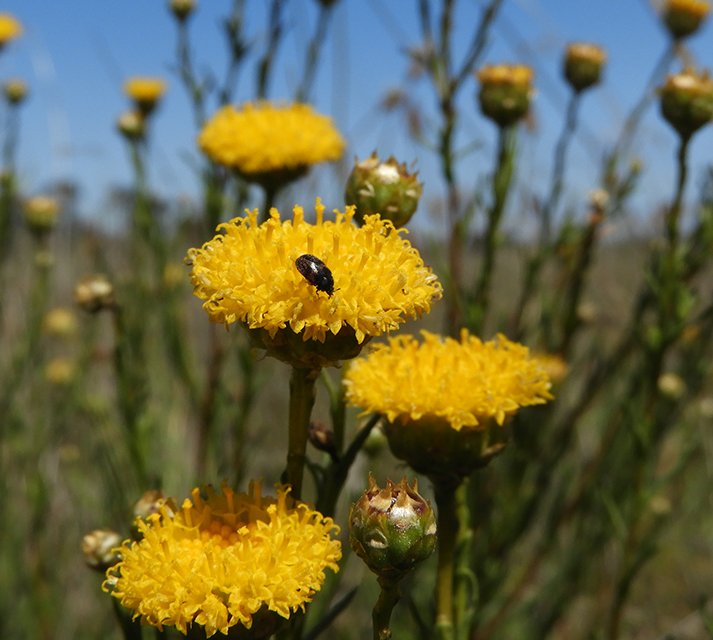CONFERENCE DAY EXCURSIONS
All tours will leave from The Round, Nunawading where conferencing will be held during the week.
Melton Botanic Garden
With construction commencing in 2011, this young garden occupies 24 hectares, and follows a watercourse, Ryans Creek, to a lake. There are a number of old and magnificent River Red Gums along this creek and elsewhere in the garden is an even older Yellow Box and a swarm of its offspring. There are also a number of trees planted around 40 years ago, with most being Eucalypts. They provide shade to the concrete path that follows the course of Ryans Creek from the north end to the lake at the southern end, and continues as a loop around the lake.
The Melton climate is the driest in the Melbourne area, with a long-term average rainfall of 450 mm, but often around 300mm. It suits plants from dry regions with a winter-wet summer-dry climate. The basis for plant selection is suitability for this climate, and most are selected from regions receiving no more than 450mm annual rainfall. Australian plant enthusiasts often spend long periods of time in the garden, with so many species planted there, including Eucalypts (100 plus), Banksias (30), Hakeas (36), Grevilleas (32), Acacias (53), Eremophilas (88). The Melton Botanic Garden is a popular place for walking and photography. The loop around the lake offers views of the lake and creek. There are many other paths which offer a variety of plants and views. Wildlife includes many birds, insects and frogs.
Visit to Friends of the Melton Botanic Garden Nursery
As part of your visit to Melton Botanic Garden there will also be time to visit the Nursery. Even if you are from interstate and cannot possibly buy plants it is always interesting to find out how others manage their propagation. We are so ultra-low tech we even hand water, but there are many rare and unusual species that we succeed with. It is all volunteer managed and run, like the rest of the garden. Many are APS members and others joined when they found out what they were missing. Most of our cuttings and many seeds are sourced from the garden.
We propagate many of the WA plants that grow so well in the WASA (Western Australia South Australia) garden. As well as Eucalypts we grow a wide range of eremophilas and correas. We also propagate for planting in the garden. How else would we be able to have the hibbertia species that comes from the Eyre Peninsula for the Eyre York Bed? It is a major part of the philosophy of APS, “Preservation through Cultivation”, something our Nursery holds dear as well.
Dandenong Ranges National Park
From Grants Picnic Ground the Hardy Gully Nature Trail in Sherbrooke Forest takes in tall tree ferns nestled in and around the enormously tall Mountain Ash, Eucalyptus regnans with many other species from the ground up. The Lyrebird Walk section may indeed let us see and/or hear lyrebirds.
Karwarra Australian Native Botanic Garden
Karwarra Australian Native Botanic Garden is set on two hectares of rich volcanic soil in Kalorama at the top of the Dandenong Ranges 35 km east of Melbourne. It showcases Australian plants in a landscaped setting incorporating several water features and it includes an area of undisturbed native bushland containing native orchids and other indigenous flora. The gardens provide habitat for wildlife such as a variety of birds, butterflies, insects and frogs as well as echidnas, wombats, bush rats, sugar gliders and possums. Karwarra also has a small nursery with a wide variety of plants for sale.
In 1965 members of the Mt Dandenong and District Horticultural Society had the idea of creating a native plant garden. Subsequently the Shire of Lillydale, (now the Yarra Ranges), purchased the land. After clearing out weeds and fencing the property in 1968 Society members started planting and in 1971 the gardens were officially opened.
Credit must be given to Kath Deery, a talented landscape designer, for the vision and early development of the gardens. This is a stroll garden with winding paths and raised garden beds. Ellis (Rocky) Stones, who worked with Edna Walling for many years, installed a rockery in the lower part of the garden.
Karwarra is responsible for Plant Trust Boronia and Telopea (Waratah) collections as a member of the Garden Plant Conservation Association of Australia. It also has important plant collections which include Lasiopetalum, Thomasia, Epacris, and members of the Rutaceae family.
Karwarra is a beautiful mature garden, a real pleasure to visit at any time of year but particularly showy in spring when it is a feast for the senses. It is a garden for relaxation, inspiration and learning, with many paths to explore and treasures to be seen.
The Chelsea Australian Garden at Olinda
Phillip Johnson Landscapes (PJL) built this garden throughout 2022 and 2023 with sponsorship from Parks Victoria and with many other donors. PJL’s Gold medal, Best in Show win at Royal Horticultural Society Chelsea Flower Show, UK in 2013 put them on the world stage. The rebuild of this garden, bigger and better in Olinda (the Chelsea Australian Garden at Olinda) in the Dandenong Ranges, Melbourne, has been a major project over the last decade for Phillip and his team and only recently (June 2023) opened to the public.
Anglesea Heathland on the Great Ocean Road
Anglesea is a town of about 2,500 people 100km south-west of Melbourne. It is surrounded by the Bass Strait, Otway National Park and the decommissioned Alcoa coal mine. It is one of the few areas in south west Victoria to have escaped farming and urbanisation and so has the richest and most diverse vegetation community in Victoria.
The area has more than 700 species of plants, which is over a quarter of Victoria’s flora, and has two plants found nowhere else – the Anglesea grevillea Grevillea infecunda and the Anglesea leek orchid Prasophyllum odoratum as well as many rare and threatened species at a state or national level. It is also a hot spot for orchids with more than 100 species being recorded in the area, one of the most orchid rich areas in Australia. Here you can find greenhood orchids, helmet orchids, sun orchids and donkey orchids, with orchids to be found flowering throughout the year.
The plant life brings a host of other life including insects, birds, reptiles and fish in the Anglesea River. Anglesea is also a haven for birds with over 100 species being recorded including Powerful Owls and the Rufous Bristlebird. Mammals are also abundant with 29 species being present including the critically endangered New Holland Mouse, Southern Brown Bandicoot and the rare Swamp Antechinus.
Royal Botanic Gardens Victoria Cranbourne (RBGVC), the Australian Garden
The Australian Garden is an award-winning, contemporary botanic garden surrounded by over 300 hectares of remnant native bushland. The Cranbourne Gardens is recognised as a site of State significance for plant and wildlife conservation and is home to over 25 endangered or rare and threatened species. Completed in October 2012, the Australian Garden was transformed from a sand mine and scrub to a botanic garden of international standing. Designed by Victorian landscape architects, T.C.L. the Australian Garden aims to show visitors the diversity, beauty and functionality of Australian native plants.
It features over 100,000 plants from 1.900 varieties. These plants are spread across many different types of garden that can be visited either on foot or via The Explorer Bus. The Red Sand Garden is the centrepiece and greets you as you descend the Visitor Centre steps and instantly become immersed in this quintessential landscape, an artistic interpretation of Australia's iconic Red Centre. Other Gardens include the Gondwana Garden, Weird and Wonderful, Seaside, Backyard Melaleuca Spits, Watersaving & Cultivar Garden among many others.
As part of our excursion we will go behind the scenes with the staff who manage the different areas. We will hear the back stories of success and failure, how the garden has evolved over time. We will also learn about the wildlife that call the garden home and the efforts to take care of them. The RBGVC has become a green island embedded in a sea of housing estates with the attendant roads and increased traffic. The RBGVC Wildlife Crossings program is a world first in innovation and ways of protecting the variety of creatures that need to cross the road. The on-site nurseries will also be part of the visit. There is a nursery dedicated to propagation for planting in the garden. There is also the Growing Friends nursery, a huge success story. It has become a centrepiece of plant production for sales to the public and they have been responsible for raising over 1 million dollars of funding for projects in the garden since they started.
Gardens for Wildlife (G4W)
The Gardens for Wildlife (G4W) program was started in the City of Knox in 2006, initiated by members of Knox Environment Society (KES), a volunteer organisation propagating indigenous plants. It is a partnership between the Council, KES, and the community to encourage residents, businesses and schools to develop wildlife attracting gardens. People who register an interest in joining the scheme will be visited by a volunteer from KES who can give advice and answer questions to help them start their wildlife garden journey.
This scheme has been a role model for other Councils to follow throughout the state of Victoria. All gardens participating in this excursion are Gardens for Wildlife. It is notable that Bev Fox’s garden was used in publications to promote the ‘Gardens for Wildlife’ scheme for many years.
Bev Fox Garden
Bev’s house and garden are on a ¼ acre site with the back garden facing west. In 2003 she decided to redesign her garden, starting at the back with the front to follow. Roger Stone, a landscape gardener and long-time friend, designed and installed the hard structure – the shaping of paths, division of space, rock work, stone paving and change of levels. With no lawn anywhere the garden could be described as a stroll garden
Bev’s garden showcases a great diversity of plants, but she is careful to repeat some plants and keep low ones lapping the edges of her paths. Taller plants are used to hide or at least distract from the fencing. There is a large eucalypt in the front garden and more than one in the back along with a mature Hakea multilineata. These tall plants are important as design elements to make the space appear larger, provide wildlife corridors and habitat, and shade. Although this is not a big garden the experience of being in the very private back garden will transport you out of suburbia into a place of ease and tranquillity. A place to unwind and breathe easy. A place that wildlife like to visit too.
Knox Park Primary School
The school, nestled in suburbia, has a magnificent large stand of remnant Eucalyptus cephalocarpa (Silverleaf stringybark) which is on a state register. It borders Lake wood Reserve to the north with indigenous plants used along the school’s fence line to complement and connect with reserve’s plantings. Many different gardens have been developed around the school including: Butterfly Garden, Small Bird Habitat and Sensory Garden. The expansion and upkeep of the extensive gardens of indigenous and broadly Australian plants is largely thanks to two APS Vic Foothills members with connections to the school who for years have spent several hours each week working there. The APS Vic Foothills group holds their monthly meetings at the school and members help out with working bees a few times a year. The garden has lovely art work on buildings, colourful totems in the garden and interpretive signage. The gardens have been created for the children’s enjoyment, wellbeing, cognitive development, learning and appreciation of an Australian environment.
Chris Larkin Garden
This large garden of approximately an acre on a steep north facing hillside was started in 1991 by employing the landscape gardener, Roger Stone, to design and plant out a relatively small section of garden on the southside of the house. Garden beds beyond this were established by Chris over time. Major developments on the northside of the house happened over the next five years. Roger Stone was again employed to do the landscaping but Chris always worked with him serving a kind of apprenticeship as she tried to learn what she could.
This is a stroll garden with curved paths running across the contour of the land. This helps to slow the downward flow of water so it soaks into the soils. At the same time the steepness of the hillside ensures there is good drainage. Informal terracing using rocks and sleepers holds the soil and creates safe paths and steps.
A very wide range of plants can be grown in a garden of this size that has a range of growing conditions from wet to dry and sunny or shady. Chris has been interested in garden design with Australian plants for close to thirty years. She wants a beautiful, peaceful, wildlife friendly garden that preserves through views to the Dandenong Ranges and the distant hills to the north. Internal views of the garden are equally as important to her. To create and maintain these internal views ground covering plants and low shrubs are used extensively.
See Chris on ABC Gardening Australia.
Grasslands tour in the suburbs of Melbourne
Less than 2% of Victoria’s grasslands remain intact and some of the best and most diverse examples are on the outskirts of Melbourne. Our Grasslands tour will include the Evans Street Grasslands in Sunbury and Iramoo at the Victoria University which are two of the best examples of original grassland flora of the Keilor basalt plains. Dr Debbie Reynolds will lead the tour and has focussed her PHD research and ongoing work into saving critically threatened grassland species, in particular Pimelea spinescens subs spinescens.
Evans Street Grasslands, Sunbury
This is a small species rich grassland located between the Melbourne-Bendigo Railway and Evans Street, Sunbury, 30km northwest of Melbourne. This area remains one of the best native grasslands in the Melbourne region with a number of state and federally listed rare plant species. Species present include Pelargonium rodneyanum, Arthropodium strictum, Stylidium graminifolium and many others including a variety of grasses & orchids.
Iramoo Wildflower Grassland Reserve, Victoria University
With the closure of the Albion explosives factory and the creation of Victoria University another piece of good fortune and far-sighted conservation created a 40-hectare volcanic plains grasslands reserve in St Albans. The site is Crown land and under the Cairnlea Conservations Reserves Committee of Management who since 2015 while working with the Friends of Iramoo were have planted over 20, 000 wildflowers directly, spread hundreds of thousands of seeds and reintroduced many endangered species. We will have lunch at the Friends nursery and classroom and see their seed bank gardens as well.
The reserve is a Themeda dominated grassland and home to a large population of Striped legless Lizards (Delmar impar). A walk through the grassland reveals a remarkable diversity of species of varying textures and colors which includes beautiful daisies such as Minuria leptophylla, Leucochrysum albicans var albicans, Rhodanthe anthemoides and swathes of Chrysocephalum. When managed well, our grasslands can be very diverse ecosystems with flowers, herbs, lillies and orchids as well as a variety of grasses and people on this excursion will have the rare opportunity to see and hear about what is being done to preserve and protect the remaining remnants.


